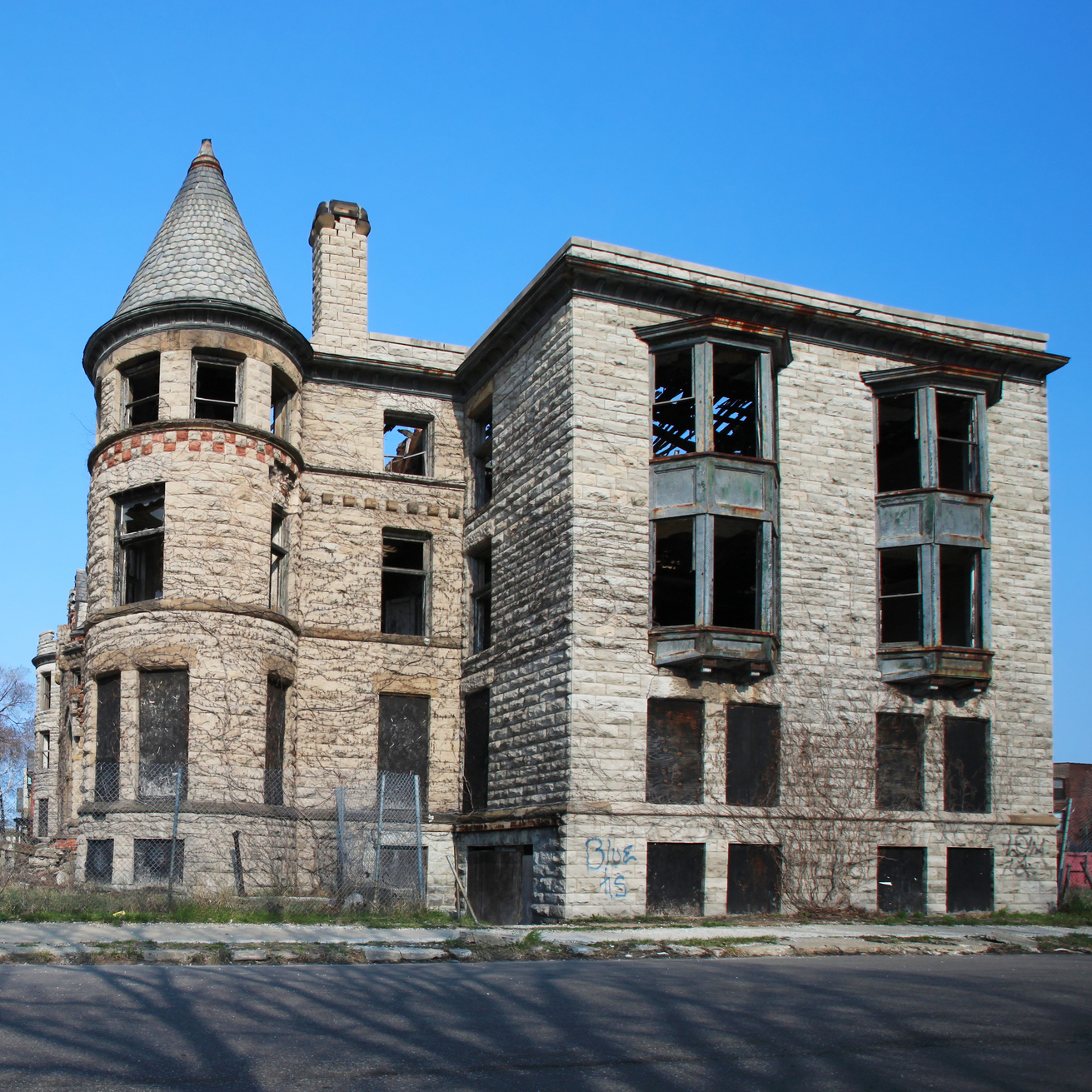
Each year, roughly 40 million Americans, or about 14% of the U.S. population, move at least once. Much of that movement includes younger people relocating within cities, but it is trends of Americans moving to warmer climates, more affordable areas, and better job opportunities that have largely determined migration patterns in recent decades.
Because of those long-term patterns, as well as the recent period of economic recovery, cities in some parts of the country have lost tens of thousands of residents.
To find the 50 U.S. metropolitan areas that have had the largest net decline in population as a result of migration between 2010 and 2017, 24/7 Wall St. reviewed population figures from the U.S. Census Bureau’s Population Estimates Program.
The 50 cities where the most people are moving away from can primarily be found in the Northeast, Midwest, and West Coast, particularly in states like Illinois, Michigan, Ohio, and New York. Among the cities where people are leaving in droves are places such as Chicago, Detroit, St. Louis, New York, and Los Angeles.
William Frey, demographer at the Brookings Institution, a nonprofit public policy research group, explained that these cities that have been losing thousands of residents due to migration are part of the long-term trend of movement from the Northeast and the Midwest to warmer climates, a trend that has increased in recent years.
“The story of the broader migration pattern in the U.S. is from Snow Belt to Sun Belt,” Frey said. “That migration has slowed a little bit in the early part of the decade, when we were still dealing with the aftermath of the recession, but it’s coming back.”
Click here to see the cities Americans are abandoning.
Click here to see the cities Americans are flocking to.
Click here to read our detailed findings and methodology.

50. Fairbanks, AK
> Population decrease due to migration, 2010-2017: -7,011
> Population change, 2010-2017: +2.2% (97,585 to 99,703)
> Natural growth, 2010-2017: 12,364 births, 3,417 deaths
> Median home value: $226,900
[in-text-ad]
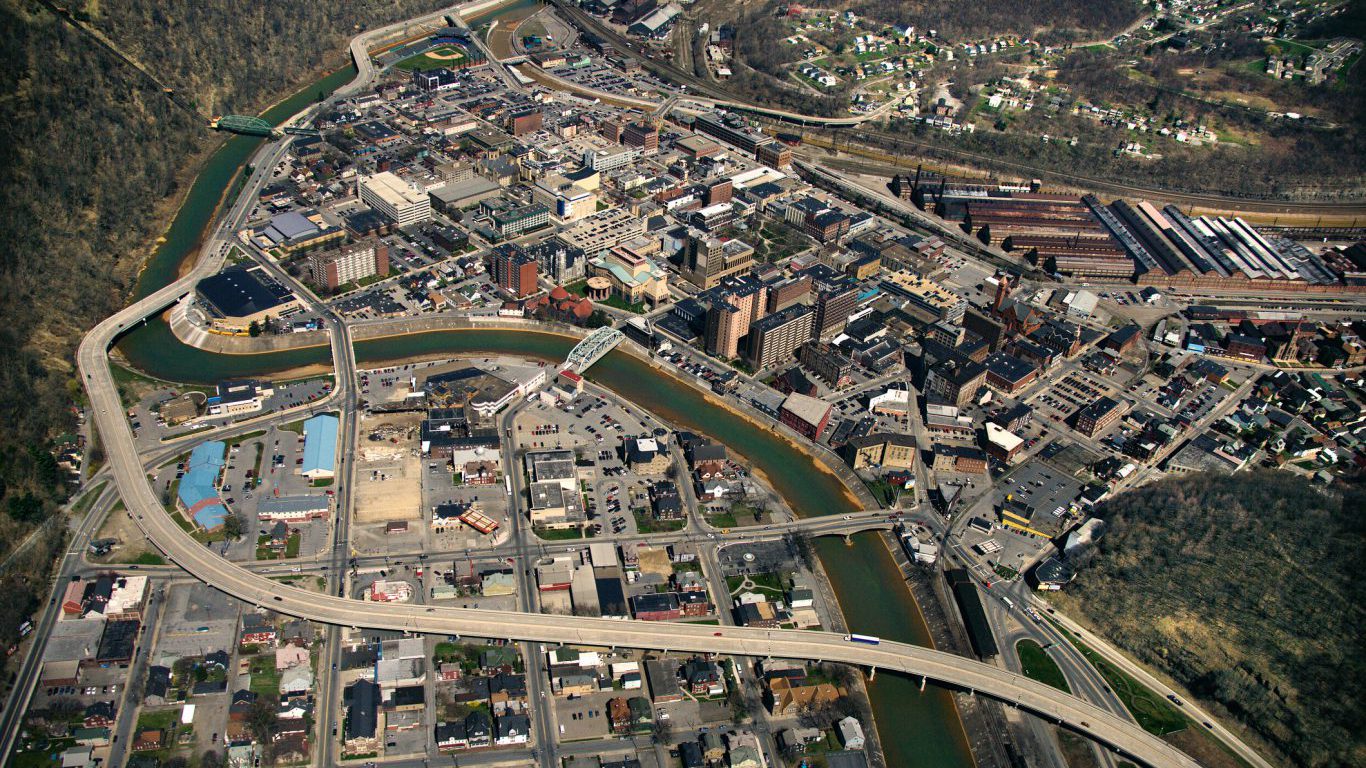
49. Johnstown, PA
> Population decrease due to migration, 2010-2017: -7,070
> Population change, 2010-2017: -7.4% (143,674 to 133,054)
> Natural growth, 2010-2017: 9,624 births, 13,203 deaths
> Median home value: $93,400
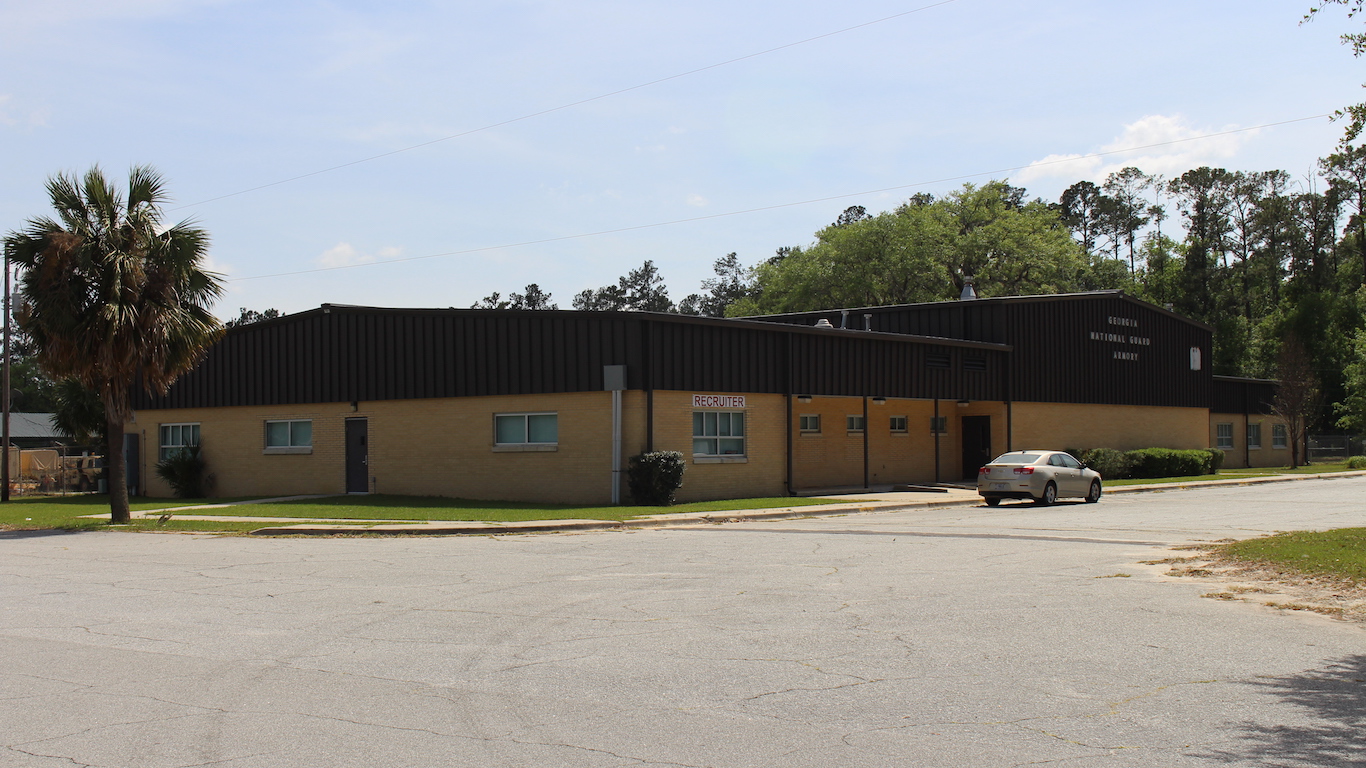
48. Hinesville, GA
> Population decrease due to migration, 2010-2017: -7,171
> Population change, 2010-2017: +3.2% (77,919 to 80,400)
> Natural growth, 2010-2017: 12,218 births, 3,030 deaths
> Median home value: $133,600
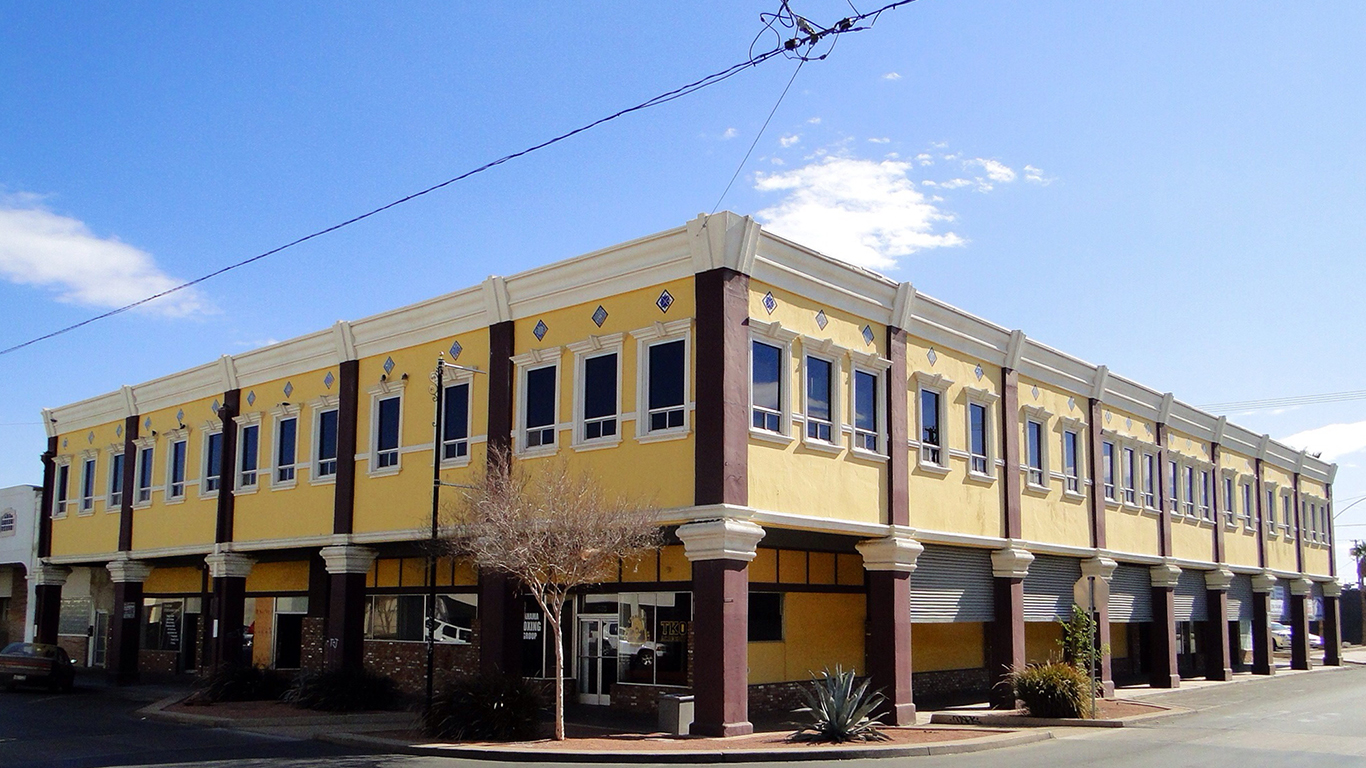
47. El Centro, CA
> Population decrease due to migration, 2010-2017: -7,219
> Population change, 2010-2017: +4.8% (174,528 to 182,830)
> Natural growth, 2010-2017: 22,531 births, 7,106 deaths
> Median home value: $170,900
[in-text-ad-2]

46. Bakersfield, CA
> Population decrease due to migration, 2010-2017: -7,314
> Population change, 2010-2017: +6.4% (839,621 to 893,119)
> Natural growth, 2010-2017: 102,106 births, 41,099 deaths
> Median home value: $204,200
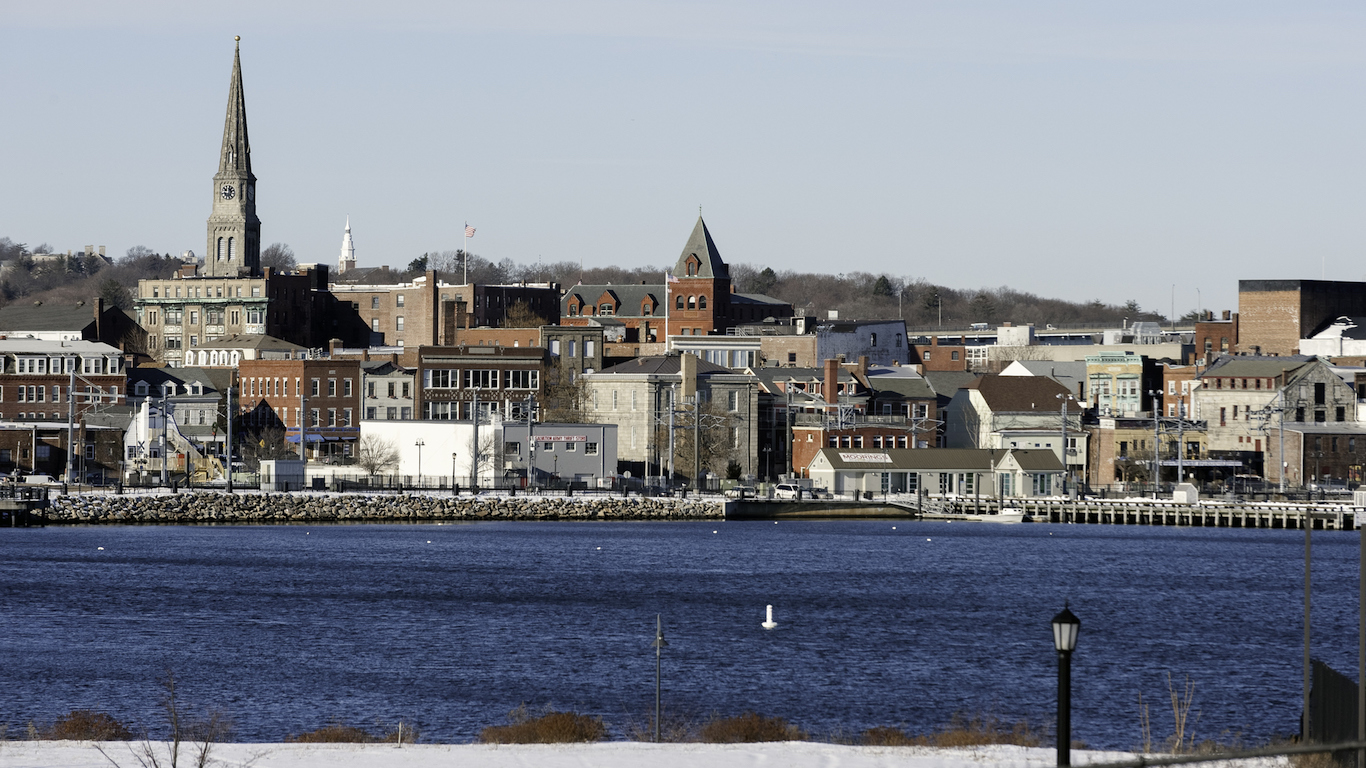
45. Norwich-New London, CT
> Population decrease due to migration, 2010-2017: -7,365
> Population change, 2010-2017: -1.8% (274,059 to 269,033)
> Natural growth, 2010-2017: 19,518 births, 17,252 deaths
> Median home value: $242,000
[in-text-ad]
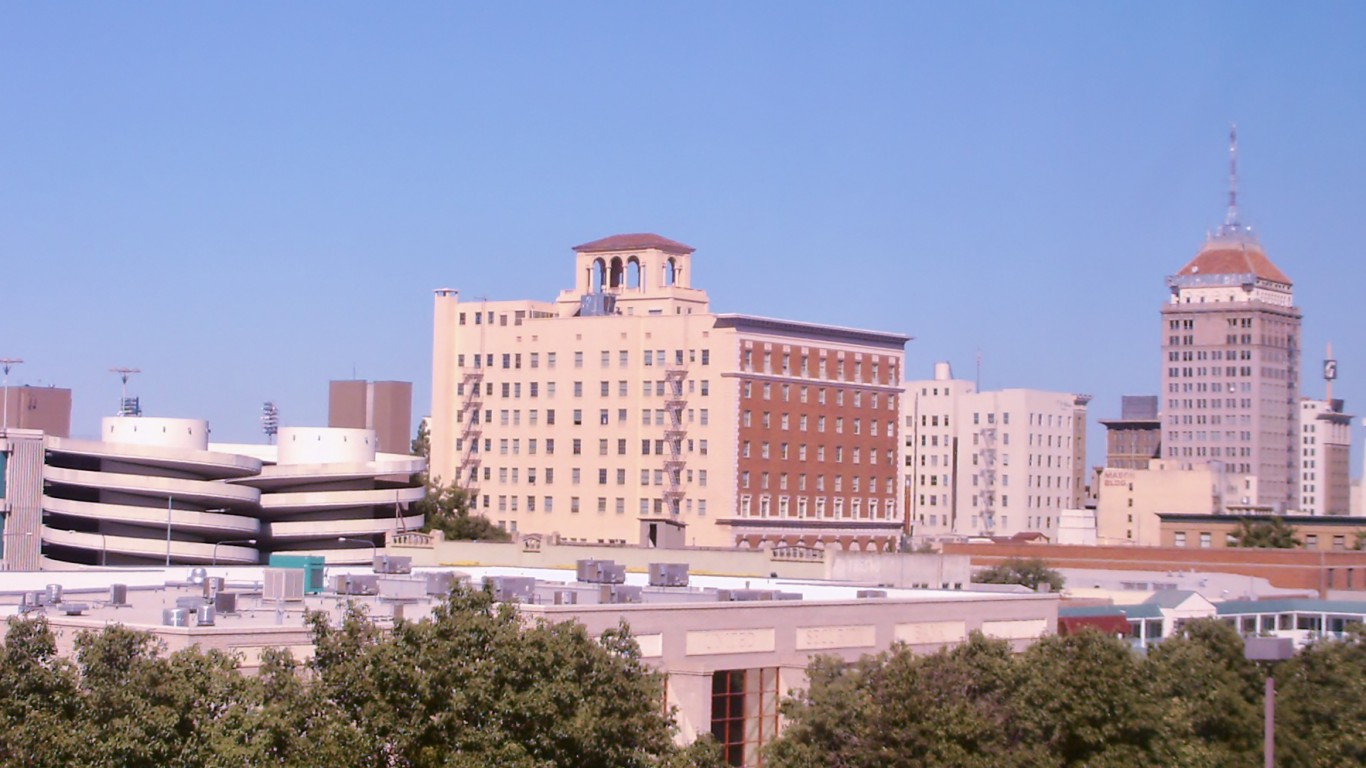
44. Fresno, CA
> Population decrease due to migration, 2010-2017: -7,571
> Population change, 2010-2017: +6.3% (930,495 to 989,255)
> Natural growth, 2010-2017: 113,926 births, 47,252 deaths
> Median home value: $238,100
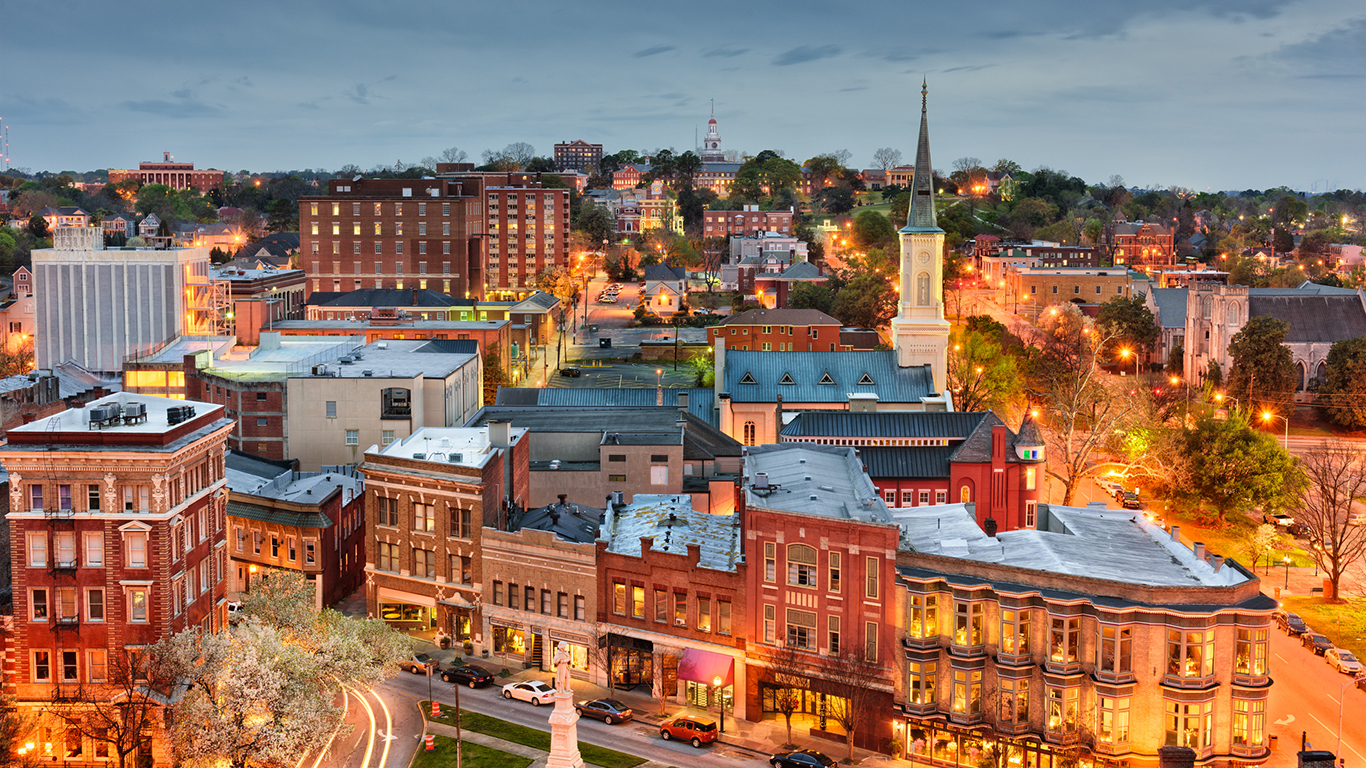
43. Macon-Bibb County, GA
> Population decrease due to migration, 2010-2017: -7,877
> Population change, 2010-2017: -1.5% (232,286 to 228,914)
> Natural growth, 2010-2017: 21,752 births, 17,233 deaths
> Median home value: $122,000
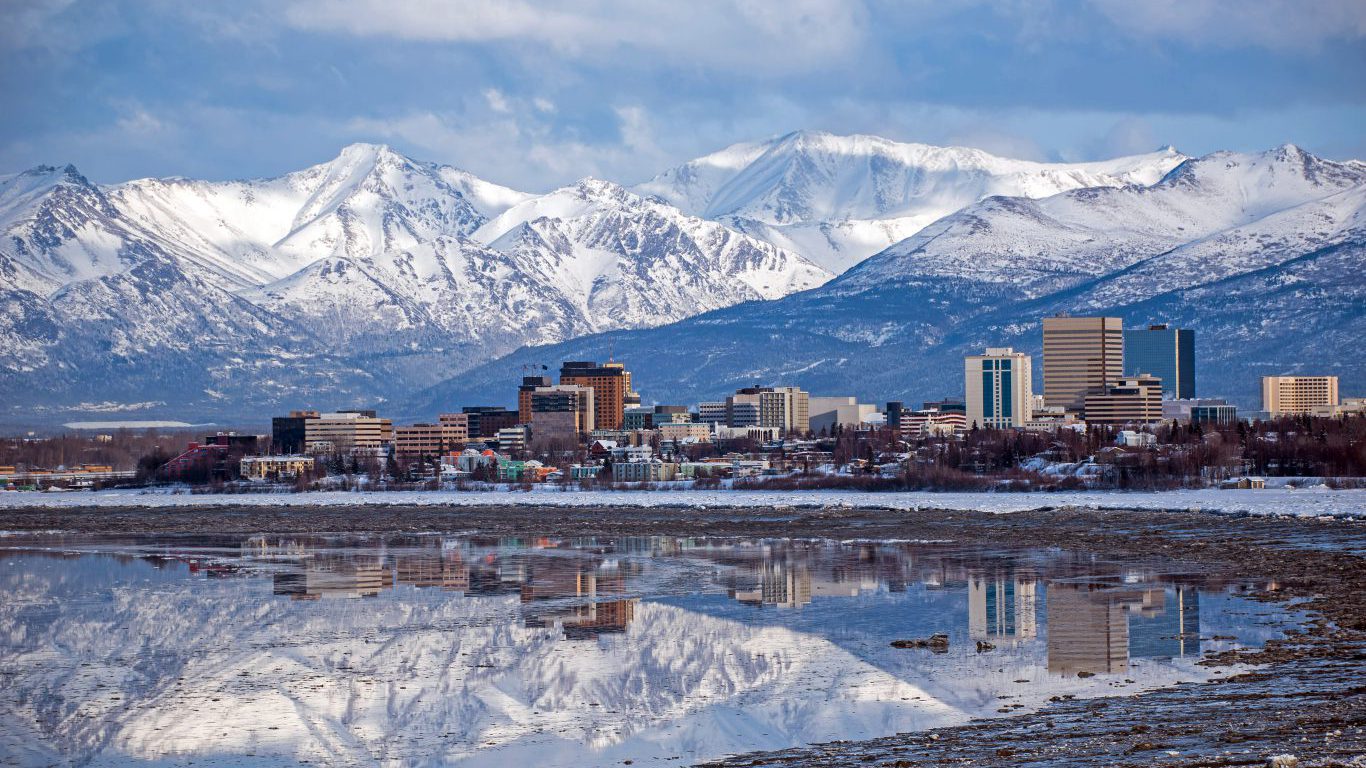
42. Anchorage, AK
> Population decrease due to migration, 2010-2017: -8,464
> Population change, 2010-2017: +5.3% (380,821 to 400,888)
> Natural growth, 2010-2017: 43,973 births, 15,756 deaths
> Median home value: $299,700
[in-text-ad-2]
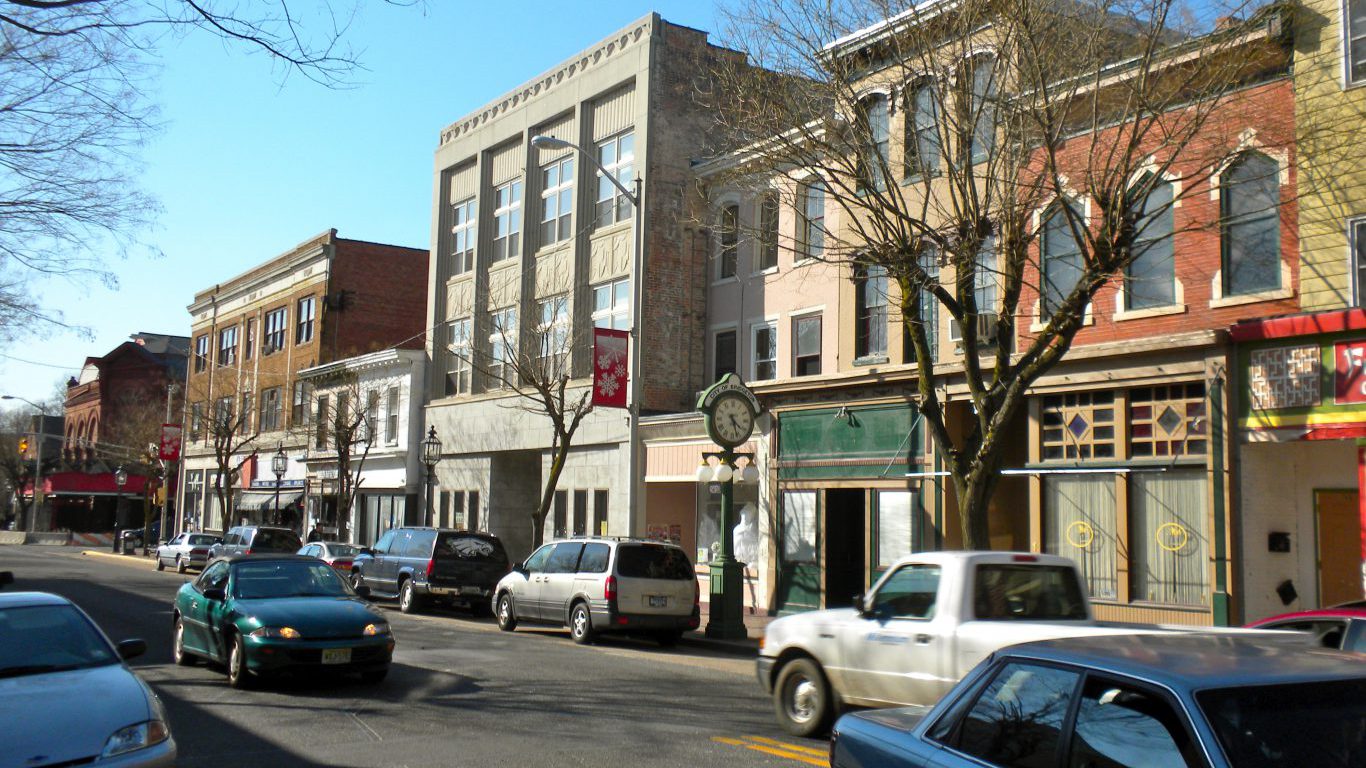
41. Vineland-Bridgeton, NJ
> Population decrease due to migration, 2010-2017: -8,476
> Population change, 2010-2017: -2.6% (156,628 to 152,538)
> Natural growth, 2010-2017: 14,926 births, 10,604 deaths
> Median home value: $165,900
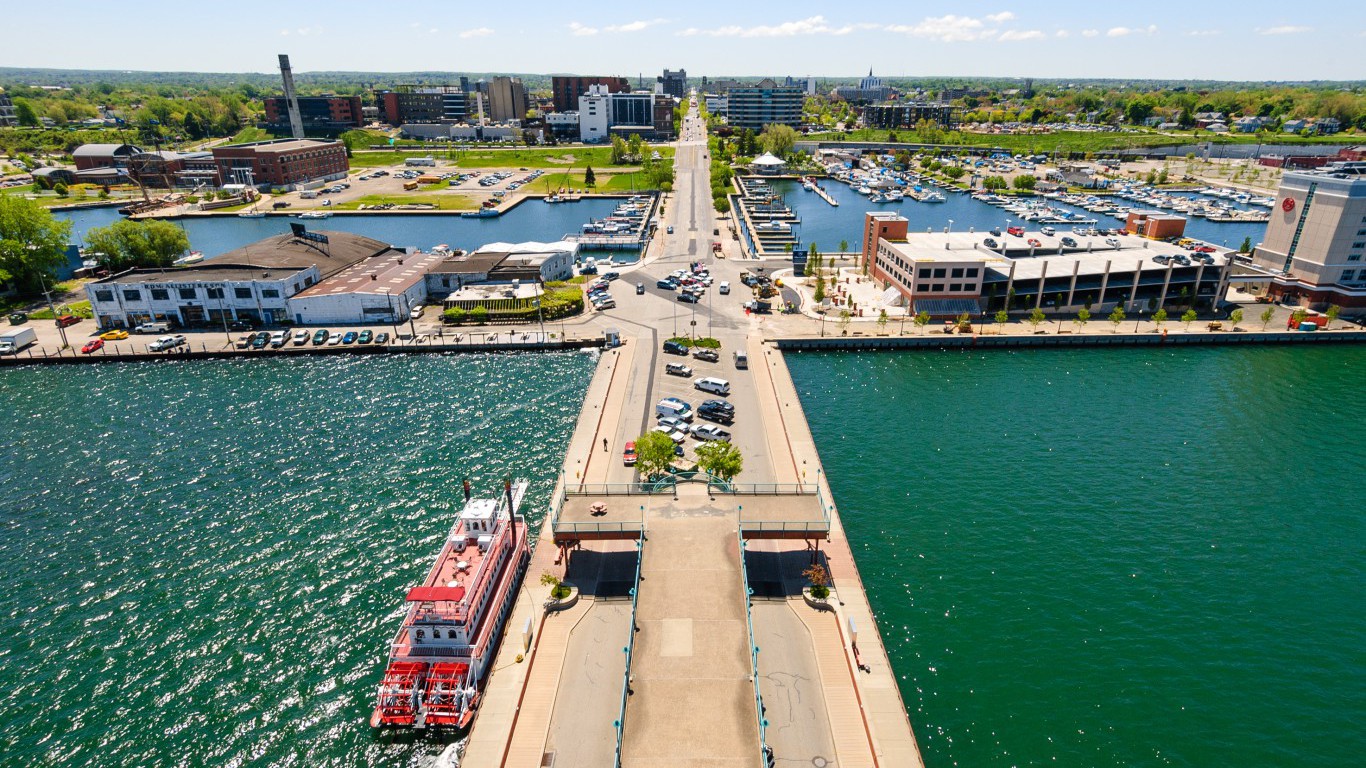
40. Erie, PA
> Population decrease due to migration, 2010-2017: -8,511
> Population change, 2010-2017: -2.1% (280,564 to 274,541)
> Natural growth, 2010-2017: 22,920 births, 20,396 deaths
> Median home value: $125,700
[in-text-ad]
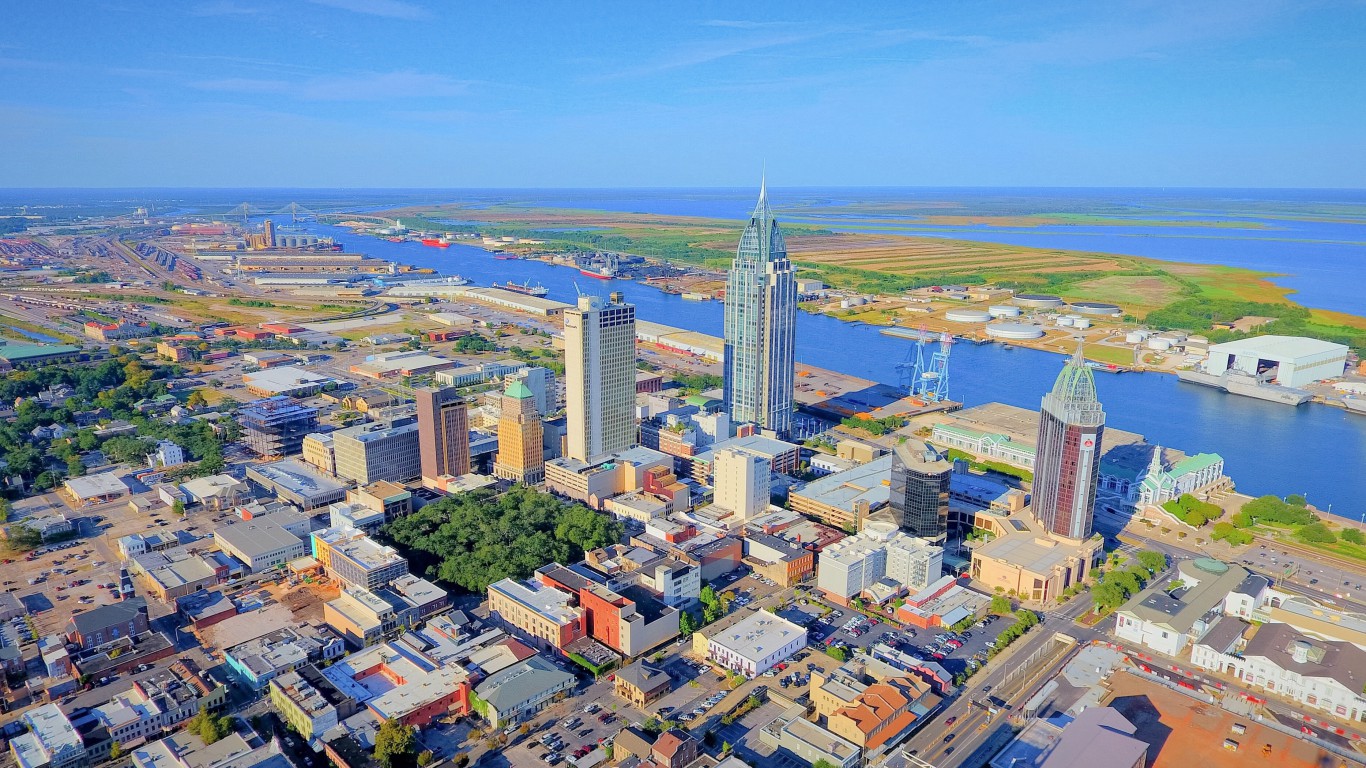
39. Mobile, AL
> Population decrease due to migration, 2010-2017: -8,517
> Population change, 2010-2017: +0.2% (413,143 to 413,955)
> Natural growth, 2010-2017: 40,422 births, 30,886 deaths
> Median home value: $126,800
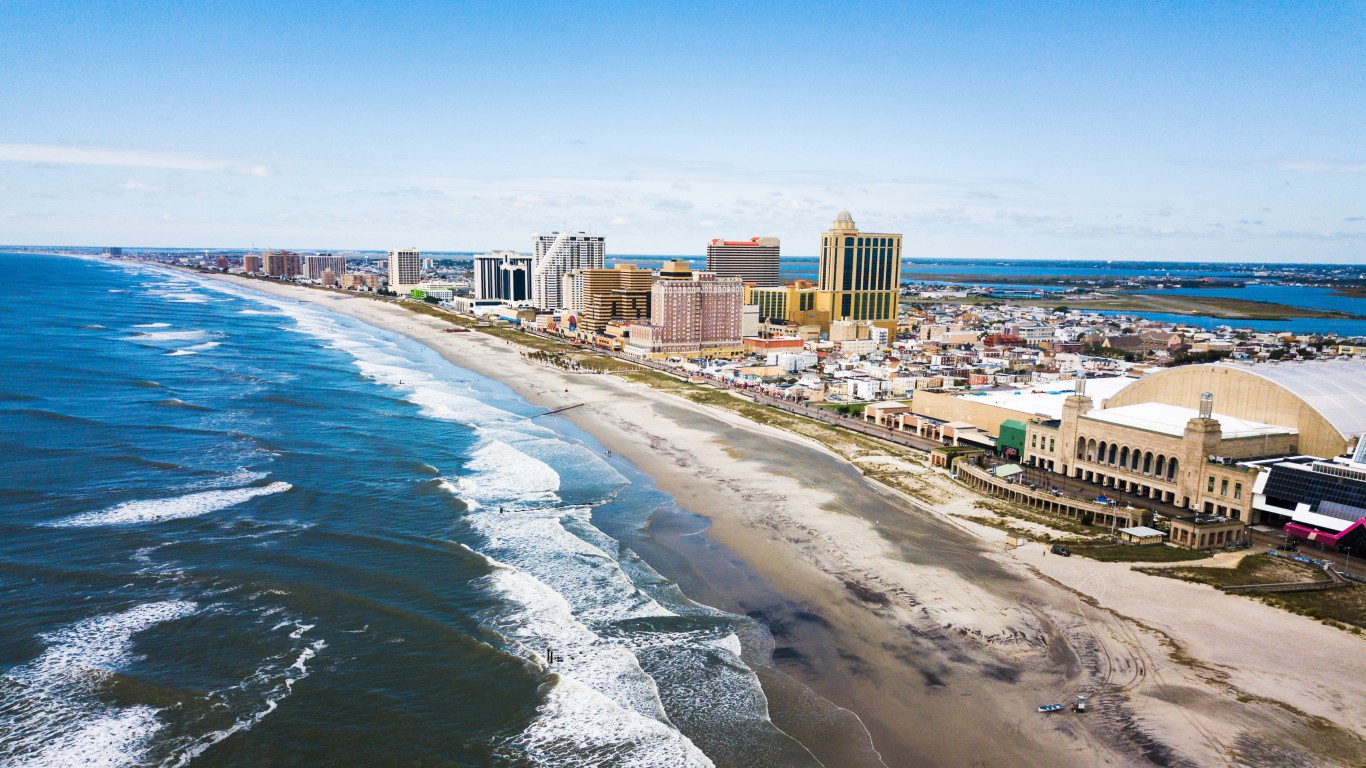
38. Atlantic City-Hammonton, NJ
> Population decrease due to migration, 2010-2017: -8,550
> Population change, 2010-2017: -1.7% (274,540 to 269,918)
> Natural growth, 2010-2017: 22,801 births, 18,976 deaths
> Median home value: $215,100
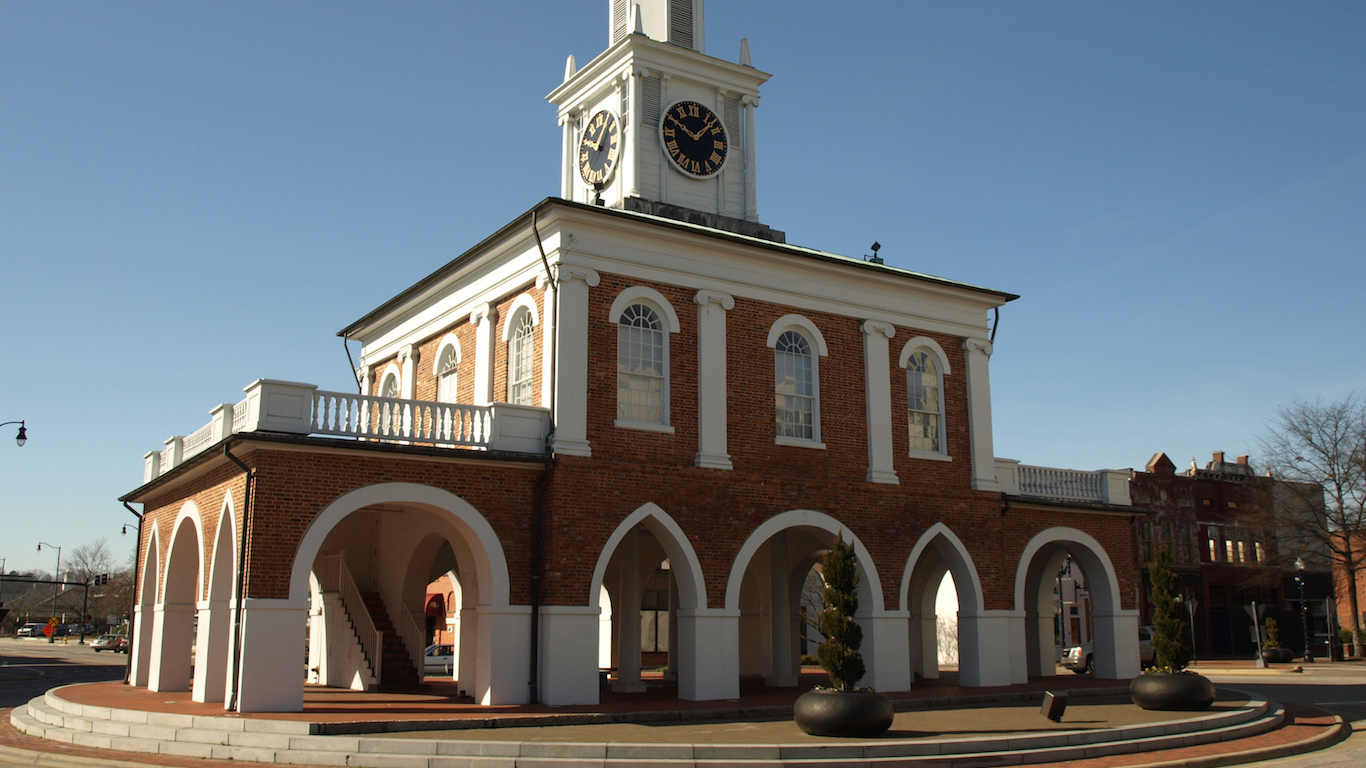
37. Fayetteville, NC
> Population decrease due to migration, 2010-2017: -8,741
> Population change, 2010-2017: +5.6% (366,322 to 386,662)
> Natural growth, 2010-2017: 47,548 births, 19,638 deaths
> Median home value: $134,600
[in-text-ad-2]
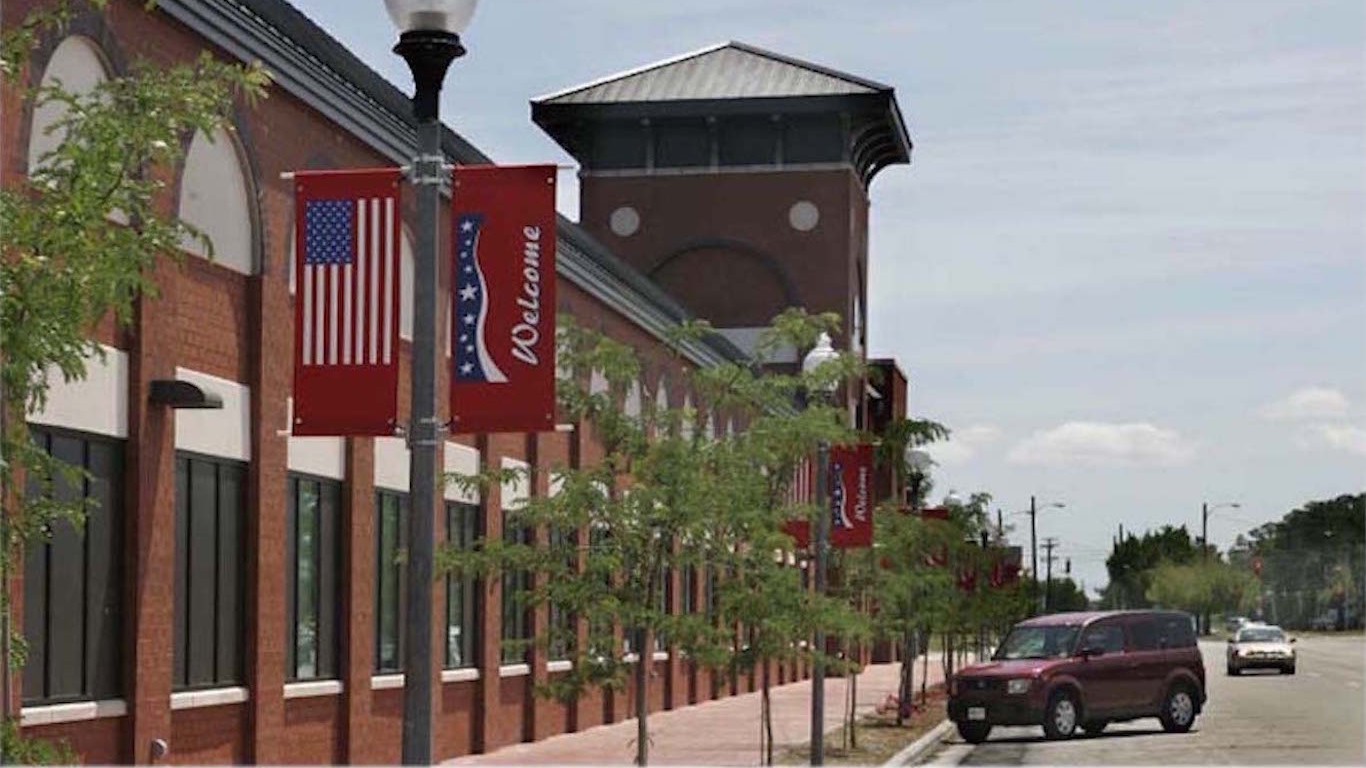
36. Jacksonville, NC
> Population decrease due to migration, 2010-2017: -8,791
> Population change, 2010-2017: +9.1% (177,799 to 193,893)
> Natural growth, 2010-2017: 30,768 births, 7,184 deaths
> Median home value: $151,500
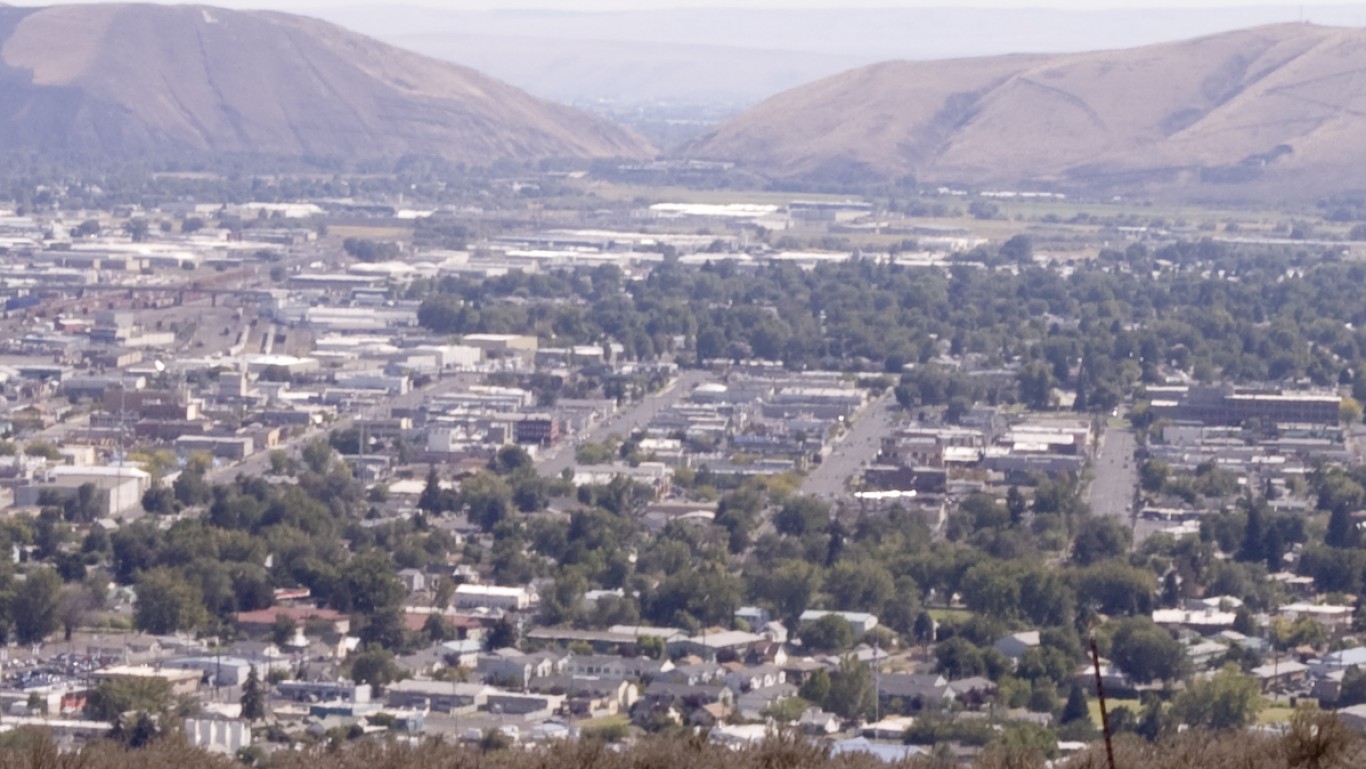
35. Yakima, WA
> Population decrease due to migration, 2010-2017: -8,916
> Population change, 2010-2017: +2.9% (243,237 to 250,193)
> Natural growth, 2010-2017: 29,681 births, 13,811 deaths
> Median home value: $166,300
[in-text-ad]

34. Binghamton, NY
> Population decrease due to migration, 2010-2017: -9,470
> Population change, 2010-2017: -3.8% (251,737 to 242,217)
> Natural growth, 2010-2017: 18,295 births, 18,409 deaths
> Median home value: $121,000
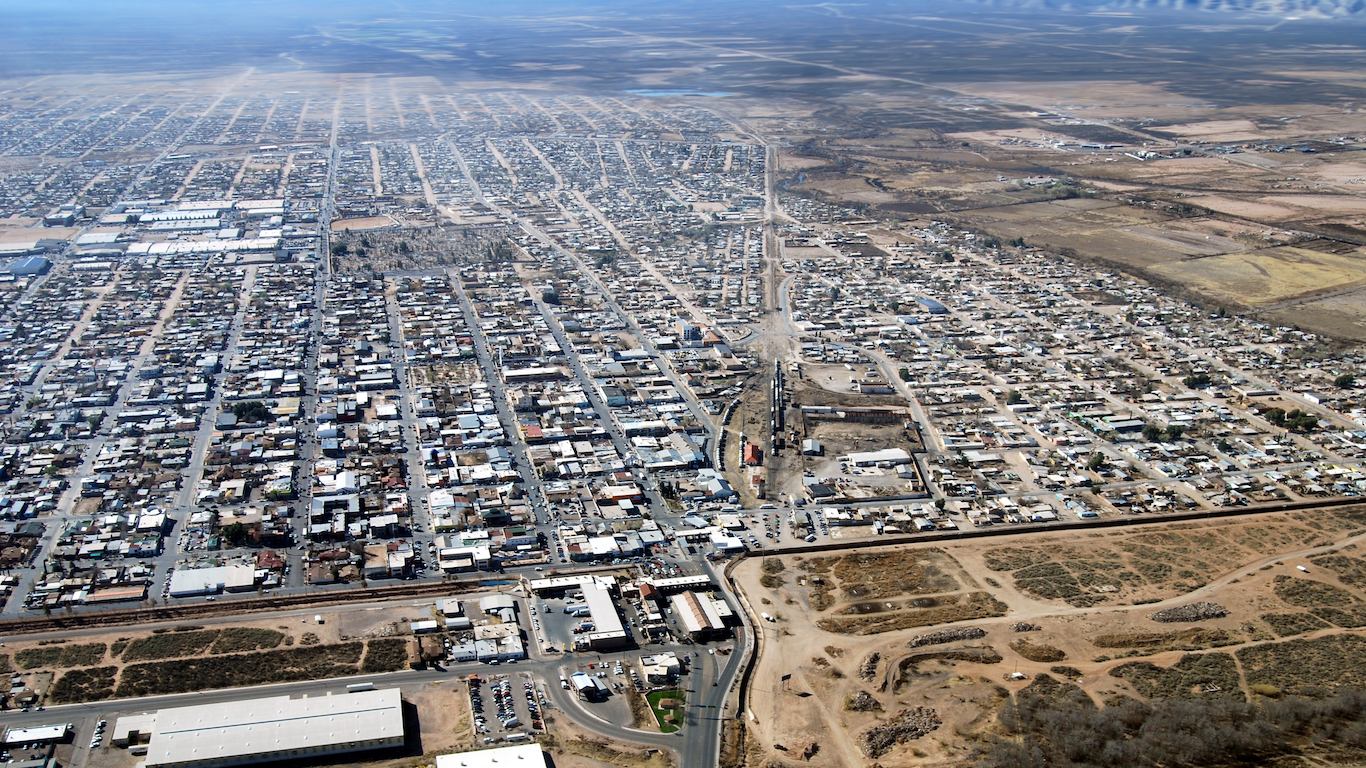
33. Sierra Vista-Douglas, AZ
> Population decrease due to migration, 2010-2017: -9,495
> Population change, 2010-2017: -5.0% (131,356 to 124,756)
> Natural growth, 2010-2017: 11,814 births, 9,110 deaths
> Median home value: $130,100
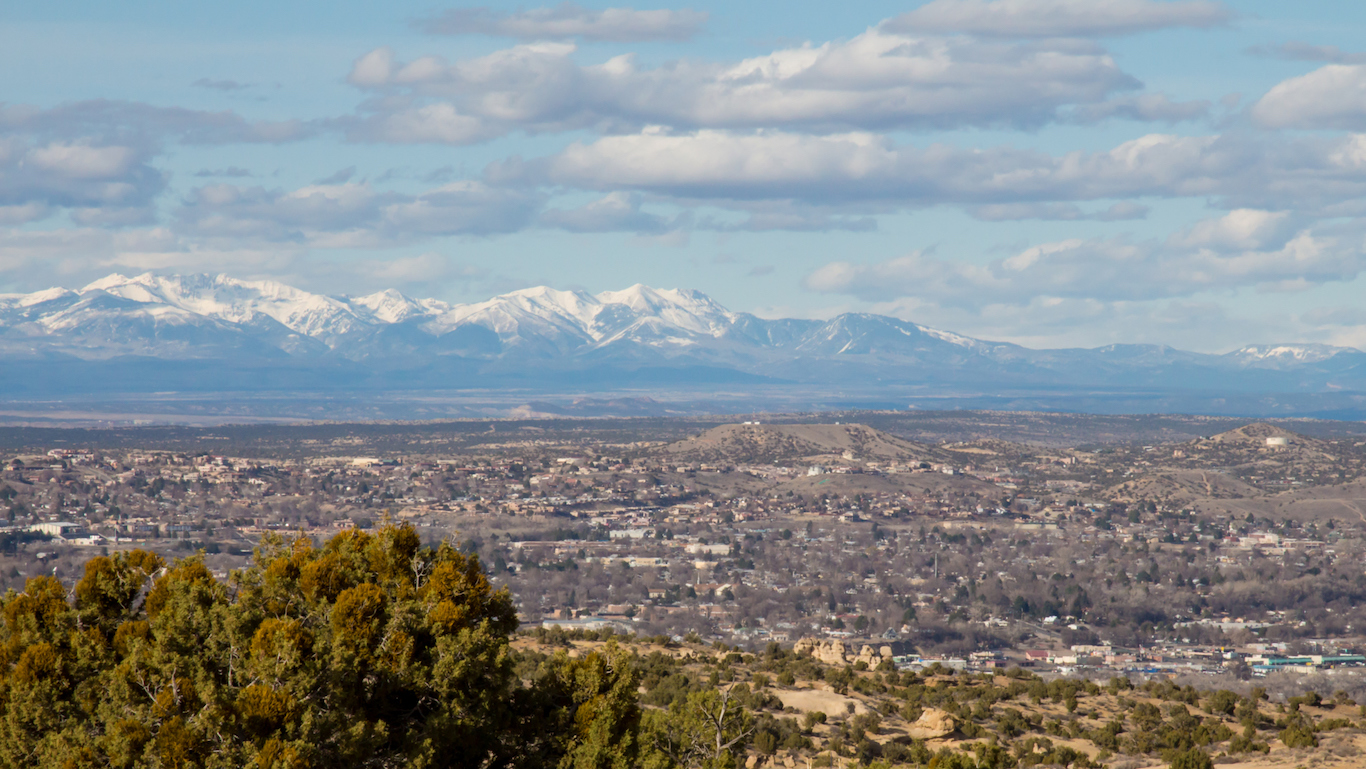
32. Farmington, NM
> Population decrease due to migration, 2010-2017: -9,633
> Population change, 2010-2017: -2.4% (130,045 to 126,926)
> Natural growth, 2010-2017: 13,381 births, 6,949 deaths
> Median home value: $153,100
[in-text-ad-2]
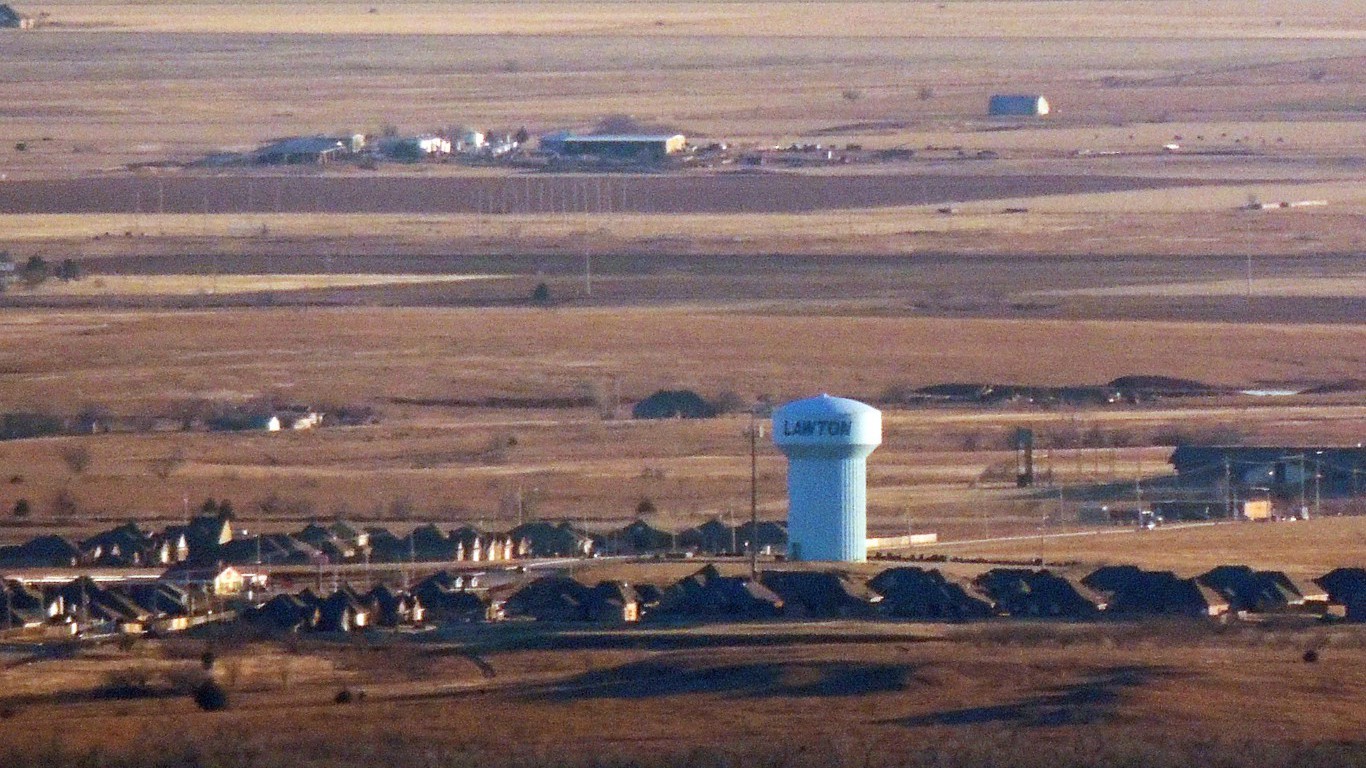
31. Lawton, OK
> Population decrease due to migration, 2010-2017: -9,641
> Population change, 2010-2017: -2.3% (130,291 to 127,349)
> Natural growth, 2010-2017: 14,355 births, 7,848 deaths
> Median home value: $124,900
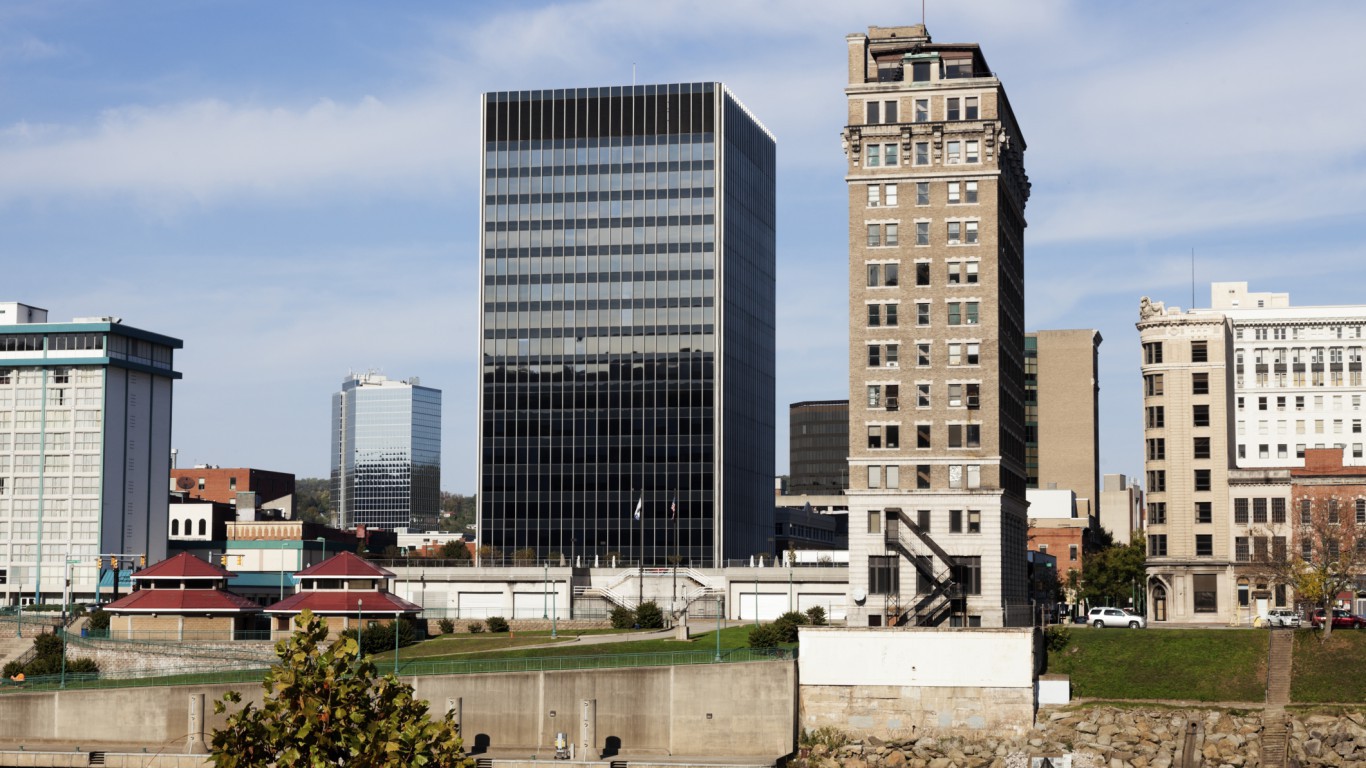
30. Charleston, WV
> Population decrease due to migration, 2010-2017: -9,772
> Population change, 2010-2017: -5.6% (227,061 to 214,406)
> Natural growth, 2010-2017: 18,078 births, 20,856 deaths
> Median home value: $111,300
[in-text-ad]
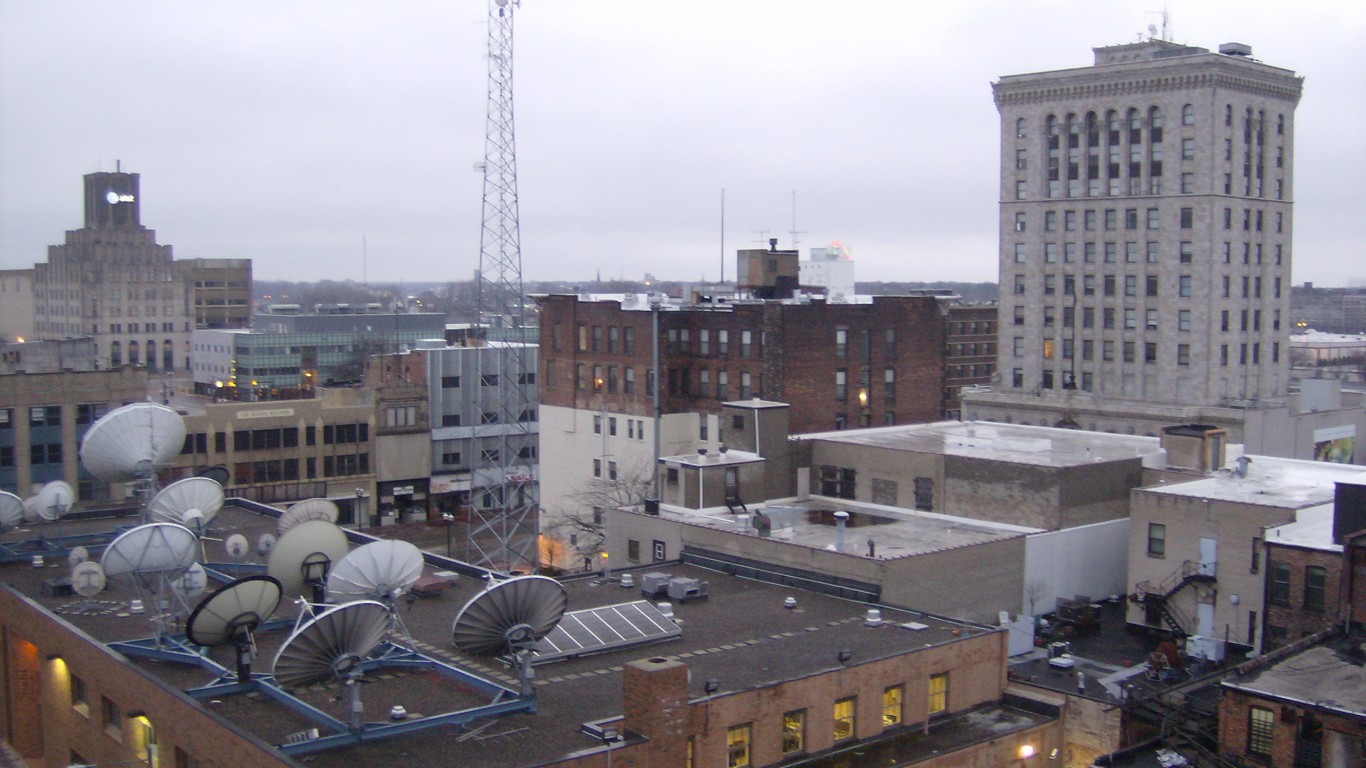
29. Saginaw, MI
> Population decrease due to migration, 2010-2017: -9,783
> Population change, 2010-2017: -4.1% (200,169 to 191,934)
> Natural growth, 2010-2017: 16,380 births, 14,912 deaths
> Median home value: $96,200
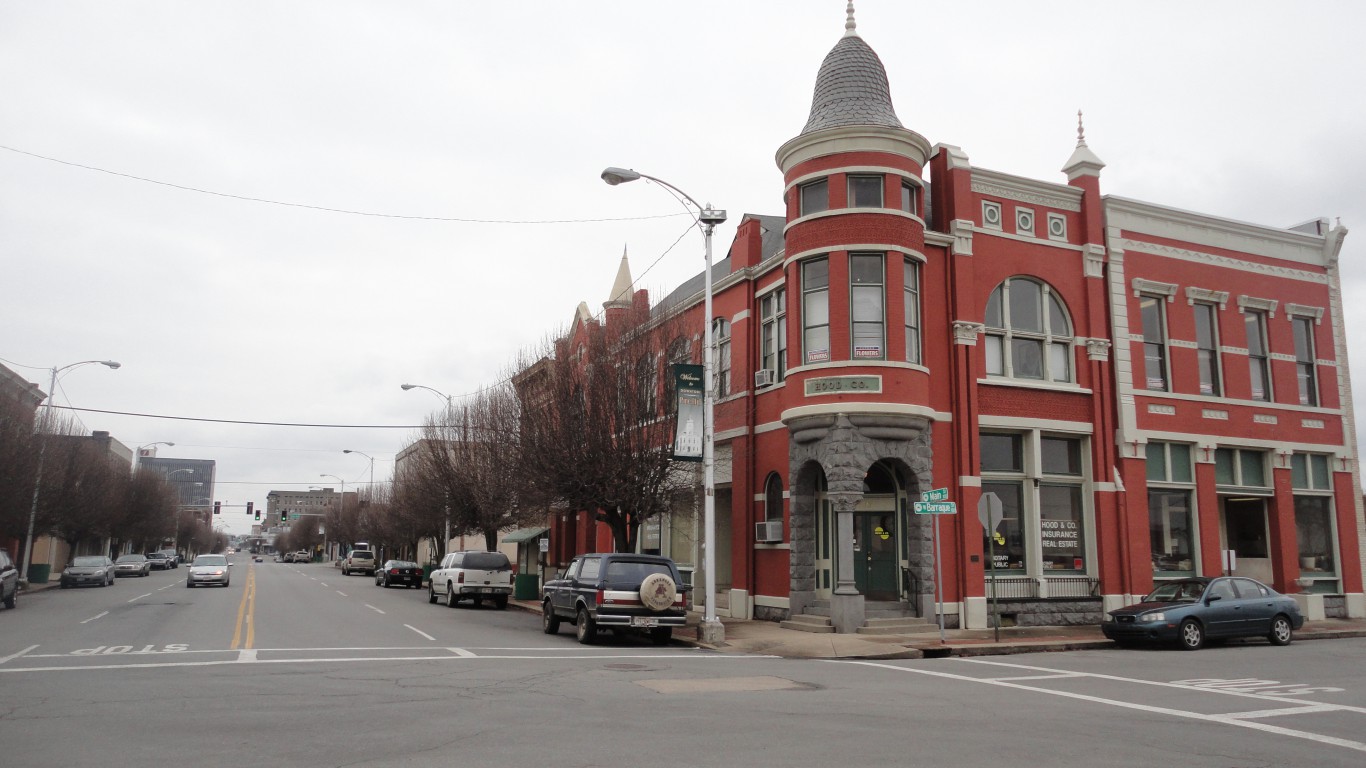
28. Pine Bluff, AR
> Population decrease due to migration, 2010-2017: -10,001
> Population change, 2010-2017: -9.3% (100,278 to 90,963)
> Natural growth, 2010-2017: 8,244 births, 7,701 deaths
> Median home value: $84,700
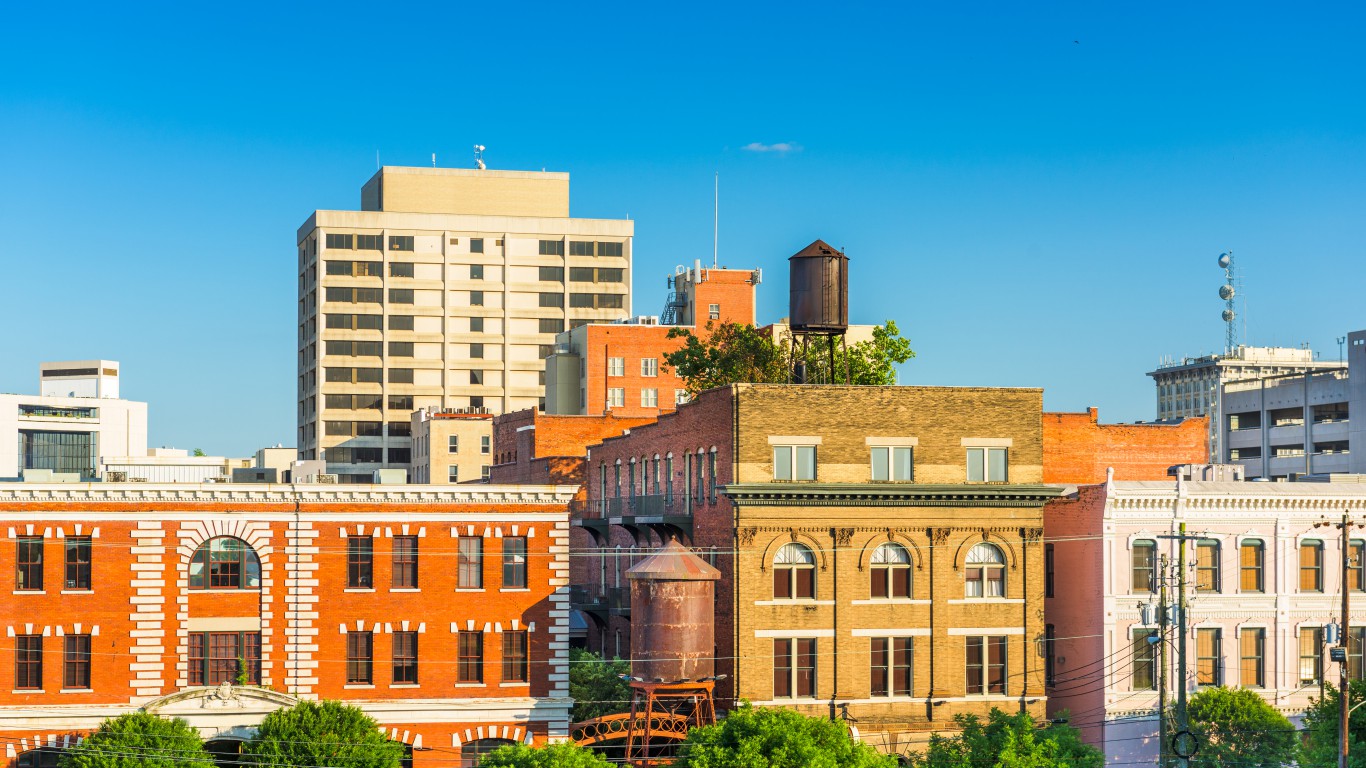
27. Montgomery, AL
> Population decrease due to migration, 2010-2017: -10,317
> Population change, 2010-2017: -0.2% (374,541 to 373,903)
> Natural growth, 2010-2017: 35,032 births, 25,380 deaths
> Median home value: $135,700
[in-text-ad-2]

26. Wichita, KS
> Population decrease due to migration, 2010-2017: -10,335
> Population change, 2010-2017: +2.3% (630,924 to 645,628)
> Natural growth, 2010-2017: 65,873 births, 40,647 deaths
> Median home value: $132,400

25. Watertown-Fort Drum, NY
> Population decrease due to migration, 2010-2017: -10,901
> Population change, 2010-2017: -1.8% (116,232 to 114,187)
> Natural growth, 2010-2017: 15,196 births, 6,527 deaths
> Median home value: $149,600
[in-text-ad]
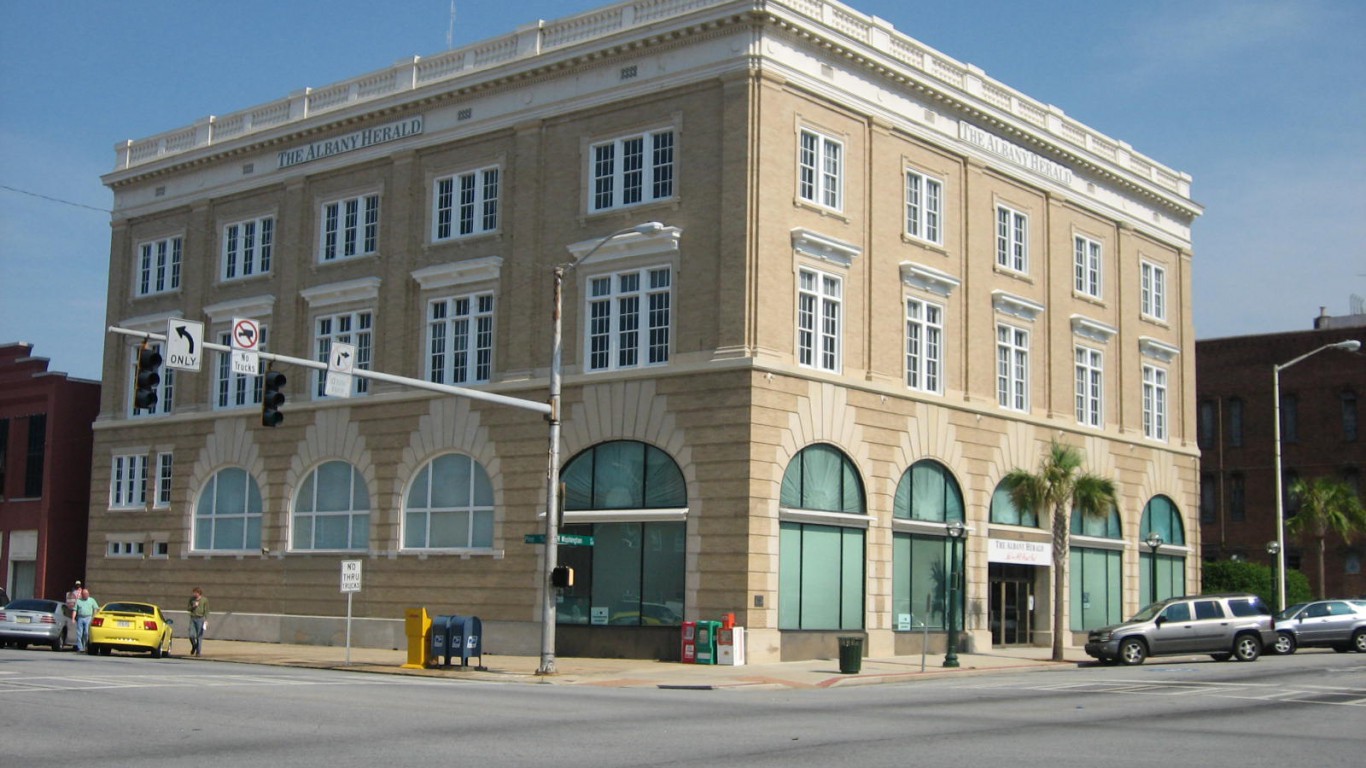
24. Albany, GA
> Population decrease due to migration, 2010-2017: -10,964
> Population change, 2010-2017: -3.9% (157,500 to 151,434)
> Natural growth, 2010-2017: 15,175 births, 10,379 deaths
> Median home value: $109,600
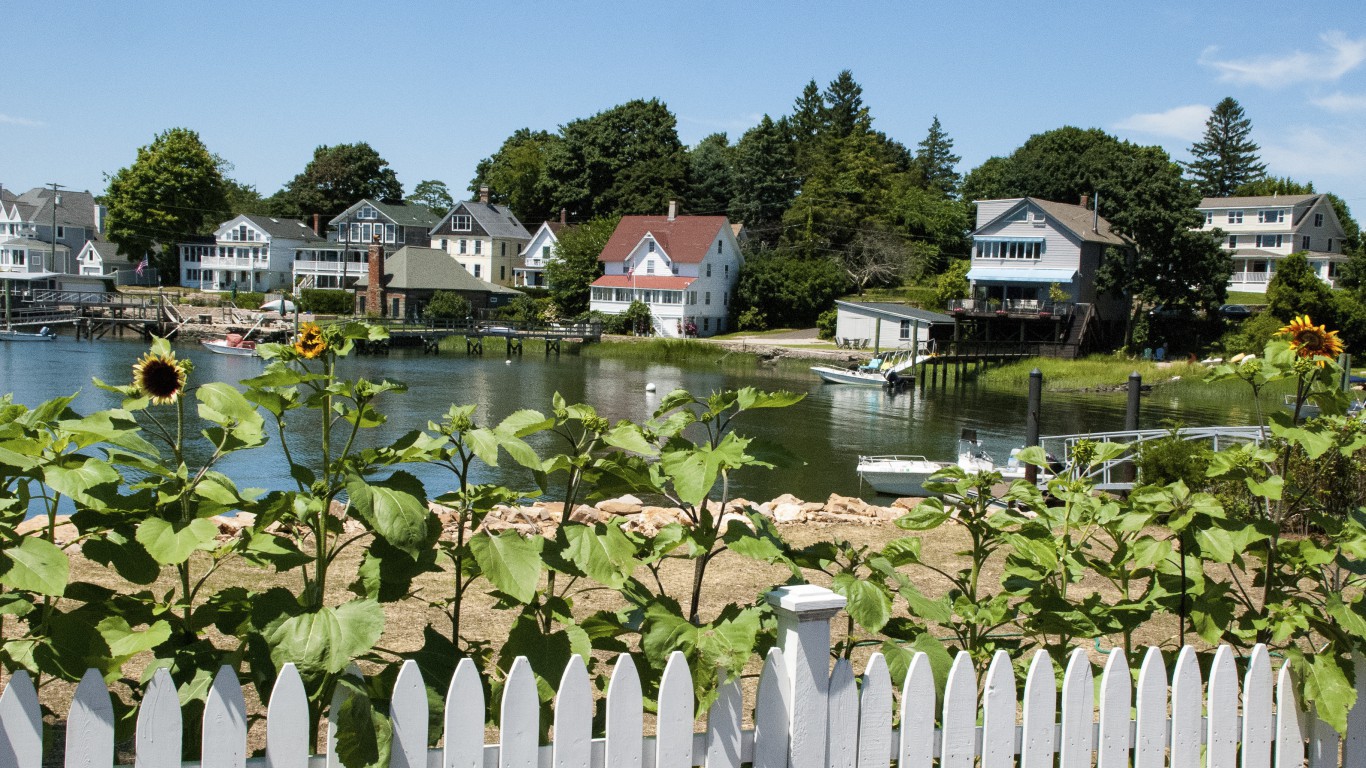
23. New Haven-Milford, CT
> Population decrease due to migration, 2010-2017: -11,253
> Population change, 2010-2017: -0.2% (862,462 to 860,435)
> Natural growth, 2010-2017: 64,732 births, 55,491 deaths
> Median home value: $247,600
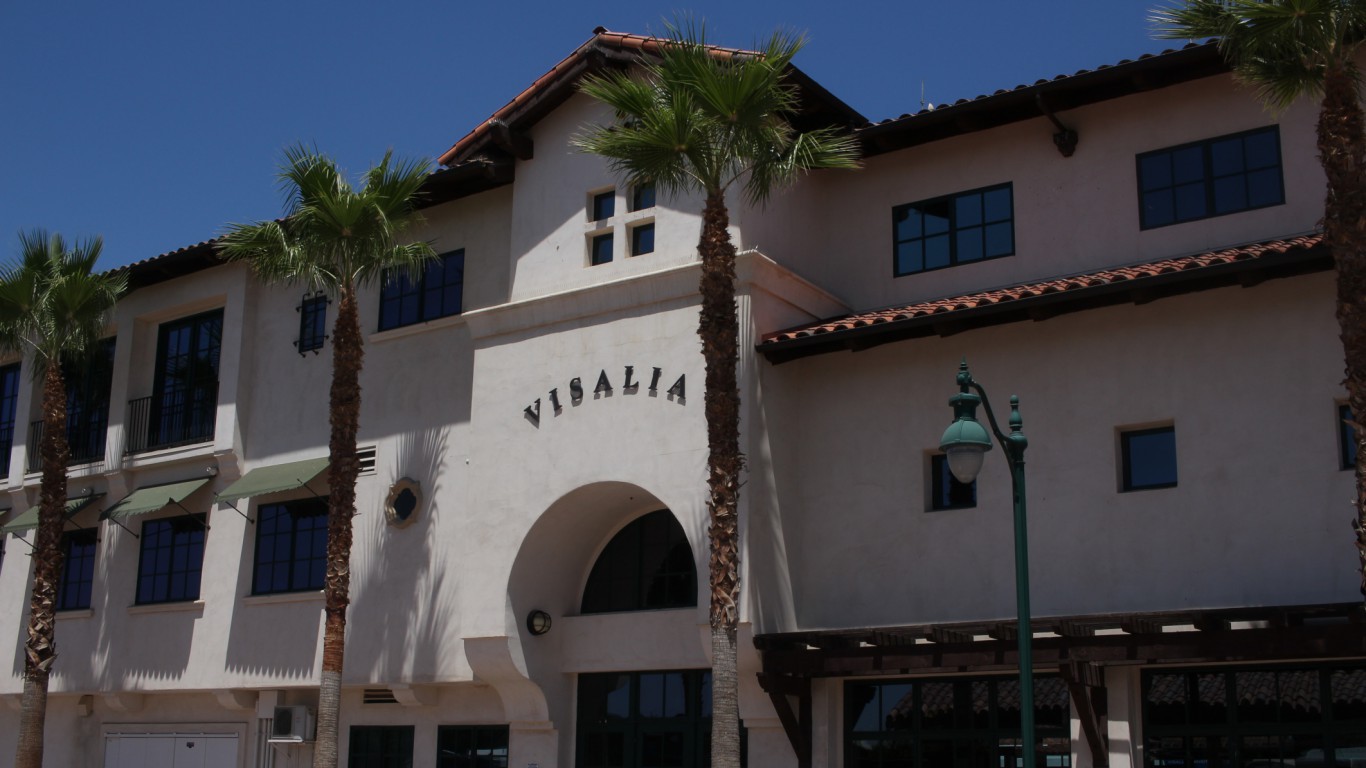
22. Visalia-Porterville, CA
> Population decrease due to migration, 2010-2017: -12,390
> Population change, 2010-2017: +5.0% (442,178 to 464,493)
> Natural growth, 2010-2017: 55,606 births, 20,845 deaths
> Median home value: $186,600
[in-text-ad-2]

21. Shreveport-Bossier City, LA
> Population decrease due to migration, 2010-2017: -12,410
> Population change, 2010-2017: +0.3% (439,811 to 440,933)
> Natural growth, 2010-2017: 46,192 births, 32,742 deaths
> Median home value: $150,900

20. Hartford-West Hartford-East Hartford, CT
> Population decrease due to migration, 2010-2017: -13,682
> Population change, 2010-2017: -0.2% (1,212,398 to 1,210,259)
> Natural growth, 2010-2017: 86,636 births, 75,155 deaths
> Median home value: $247,400
[in-text-ad]

19. Youngstown-Warren-Boardman, OH-PA
> Population decrease due to migration, 2010-2017: -14,057
> Population change, 2010-2017: -4.2% (565,799 to 541,926)
> Natural growth, 2010-2017: 40,696 births, 50,302 deaths
> Median home value: $106,000

18. Peoria, IL
> Population decrease due to migration, 2010-2017: -14,415
> Population change, 2010-2017: -1.8% (379,186 to 372,427)
> Natural growth, 2010-2017: 35,268 births, 27,573 deaths
> Median home value: $136,800
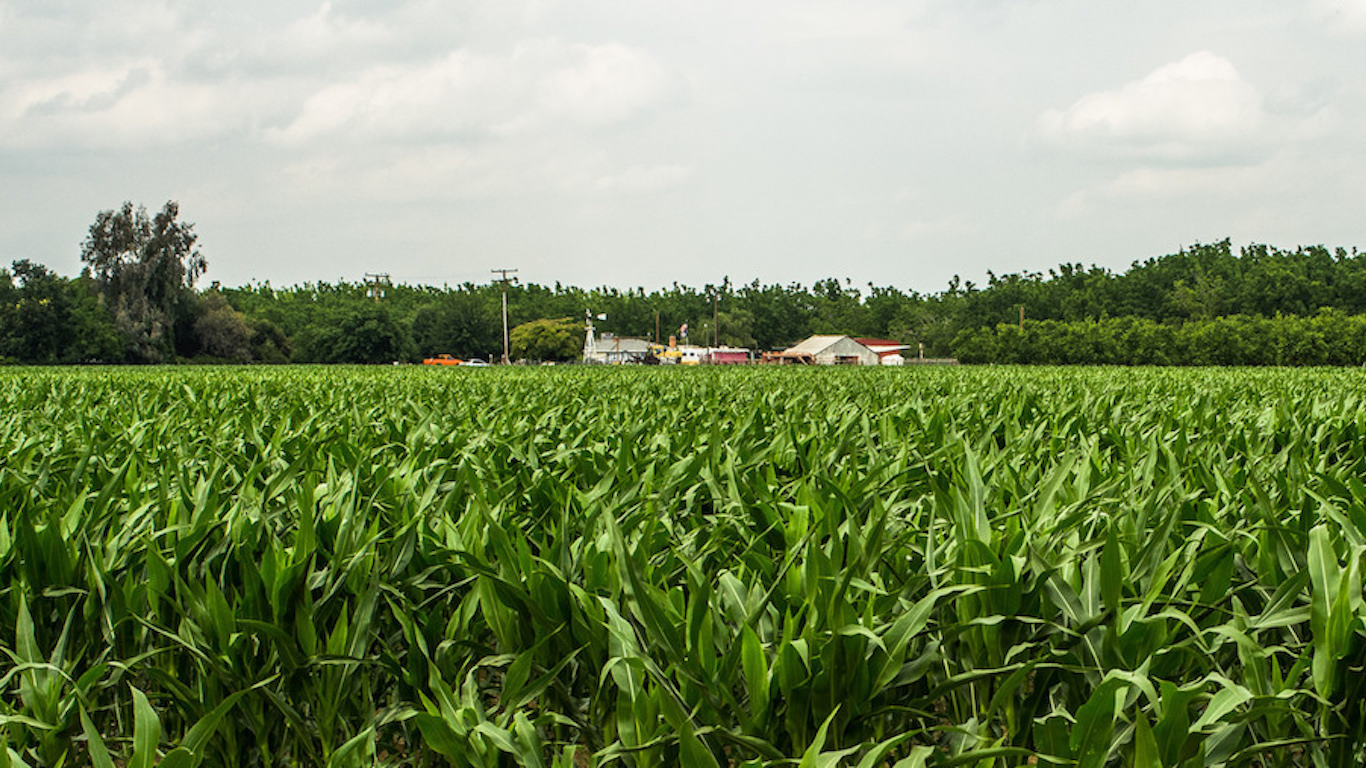
17. Hanford-Corcoran, CA
> Population decrease due to migration, 2010-2017: -14,442
> Population change, 2010-2017: -1.9% (152,982 to 150,101)
> Natural growth, 2010-2017: 17,121 births, 5,895 deaths
> Median home value: $190,500
[in-text-ad-2]
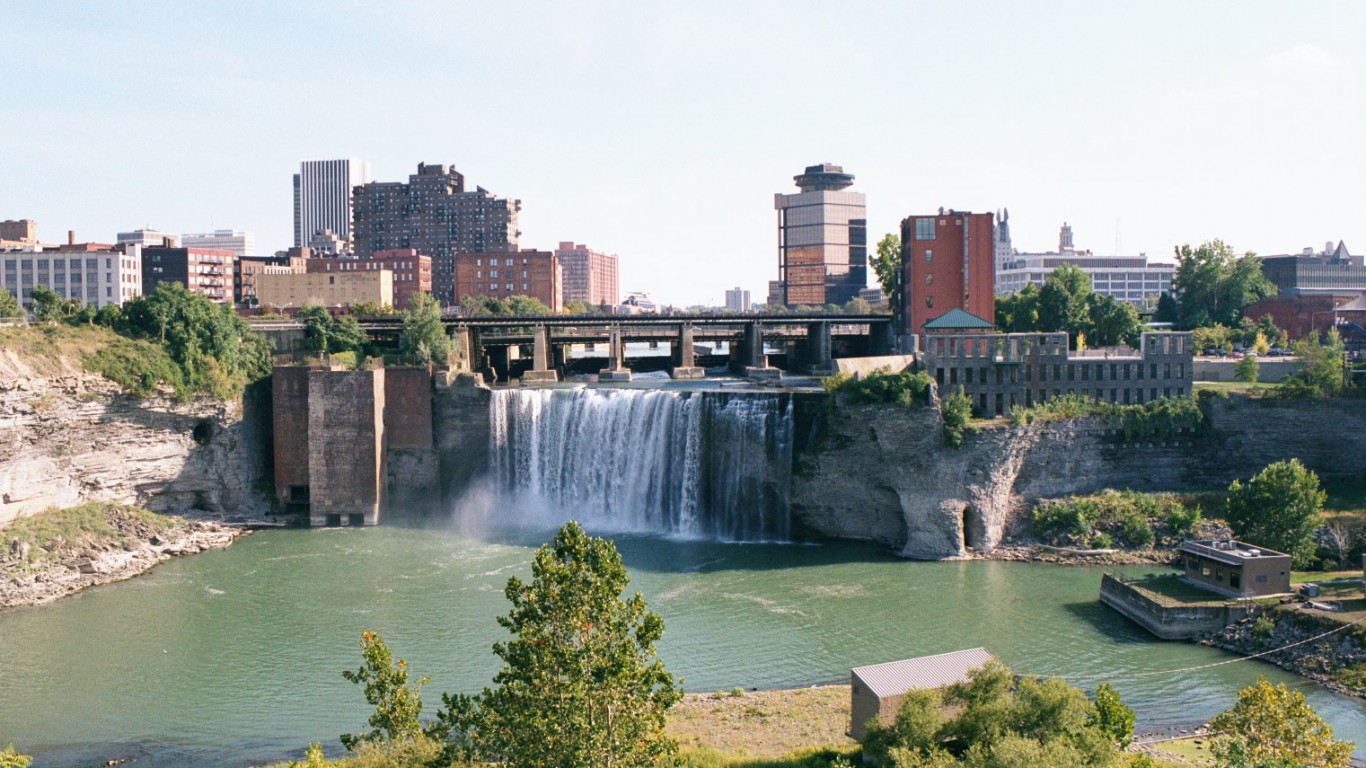
16. Rochester, NY
> Population decrease due to migration, 2010-2017: -15,934
> Population change, 2010-2017: -0.2% (1,079,691 to 1,077,948)
> Natural growth, 2010-2017: 84,317 births, 69,938 deaths
> Median home value: $138,900
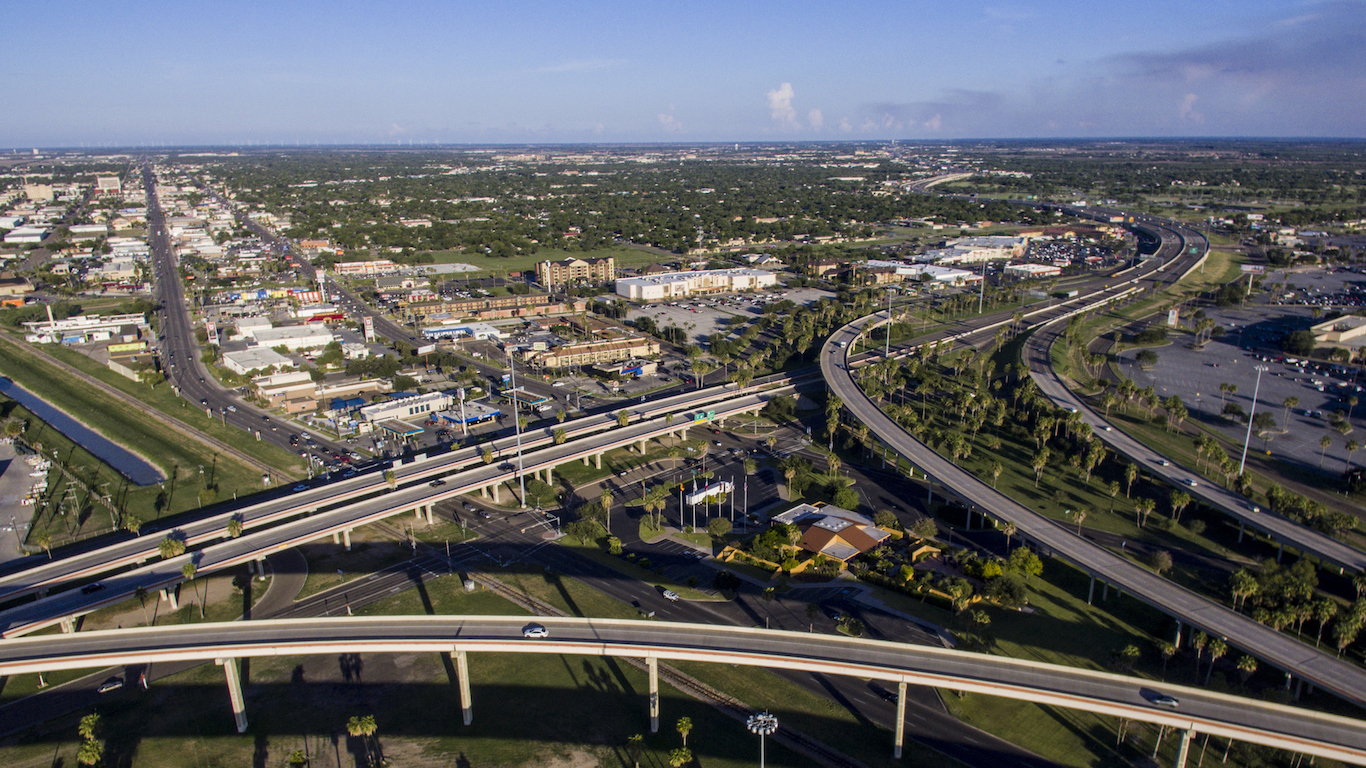
15. Brownsville-Harlingen, TX
> Population decrease due to migration, 2010-2017: -17,233
> Population change, 2010-2017: +4.3% (406,219 to 423,725)
> Natural growth, 2010-2017: 53,118 births, 18,432 deaths
> Median home value: $80,000
[in-text-ad]

14. Virginia Beach-Norfolk-Newport News, VA-NC
> Population decrease due to migration, 2010-2017: -17,297
> Population change, 2010-2017: +2.9% (1,676,817 to 1,725,246)
> Natural growth, 2010-2017: 163,787 births, 97,935 deaths
> Median home value: $239,900
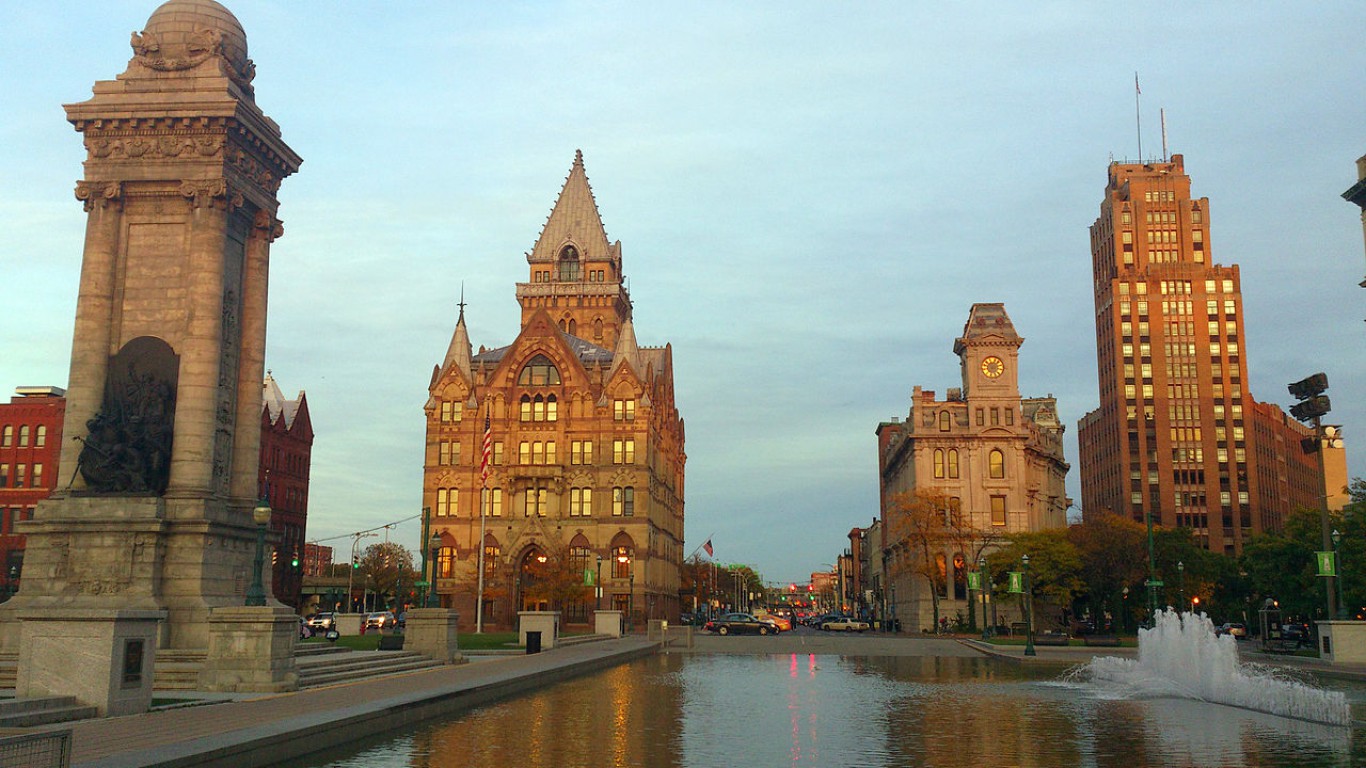
13. Syracuse, NY
> Population decrease due to migration, 2010-2017: -17,717
> Population change, 2010-2017: -1.2% (662,625 to 654,841)
> Natural growth, 2010-2017: 52,435 births, 42,535 deaths
> Median home value: $133,300

12. Toledo, OH
> Population decrease due to migration, 2010-2017: -18,475
> Population change, 2010-2017: -1.0% (610,002 to 603,668)
> Natural growth, 2010-2017: 54,309 births, 42,313 deaths
> Median home value: $129,200
[in-text-ad-2]
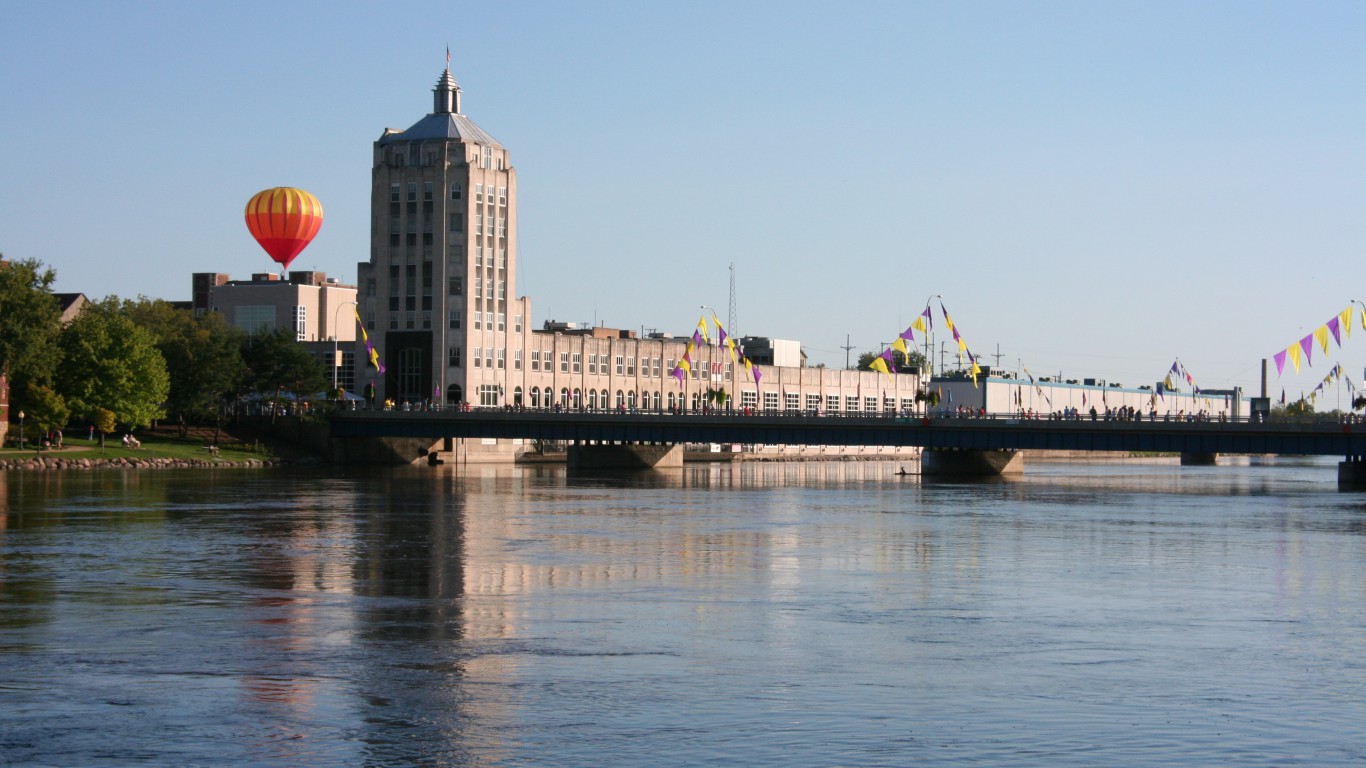
11. Rockford, IL
> Population decrease due to migration, 2010-2017: -18,789
> Population change, 2010-2017: -3.2% (349,431 to 338,291)
> Natural growth, 2010-2017: 30,366 births, 22,915 deaths
> Median home value: $121,600

10. New York-Newark-Jersey City, NY-NJ-PA
> Population decrease due to migration, 2010-2017: -21,503
> Population change, 2010-2017: +3.9% (19,566,480 to 20,320,876)
> Natural growth, 2010-2017: 1,811,927 births, 1,035,505 deaths
> Median home value: $426,300
[in-text-ad]
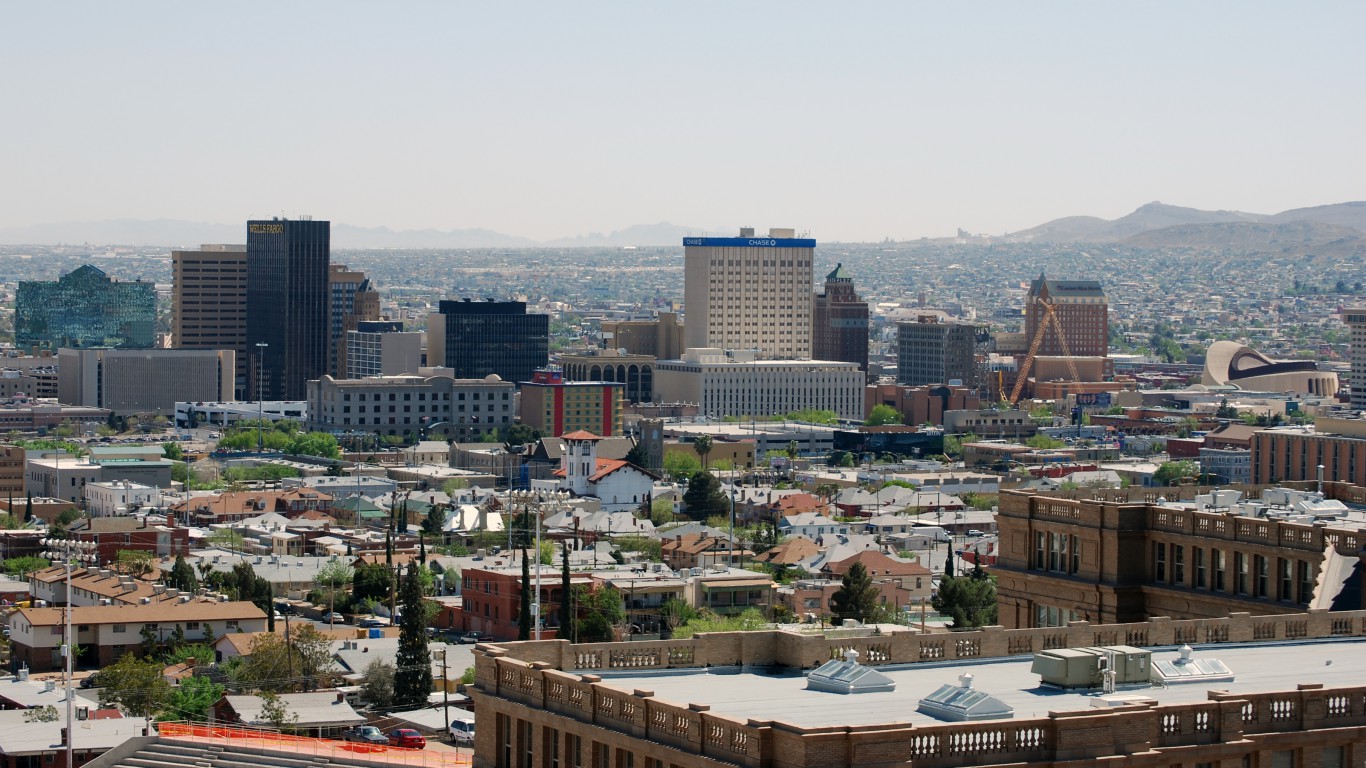
9. El Paso, TX
> Population decrease due to migration, 2010-2017: -21,829
> Population change, 2010-2017: +5.1% (804,123 to 844,818)
> Natural growth, 2010-2017: 98,803 births, 36,570 deaths
> Median home value: $119,600
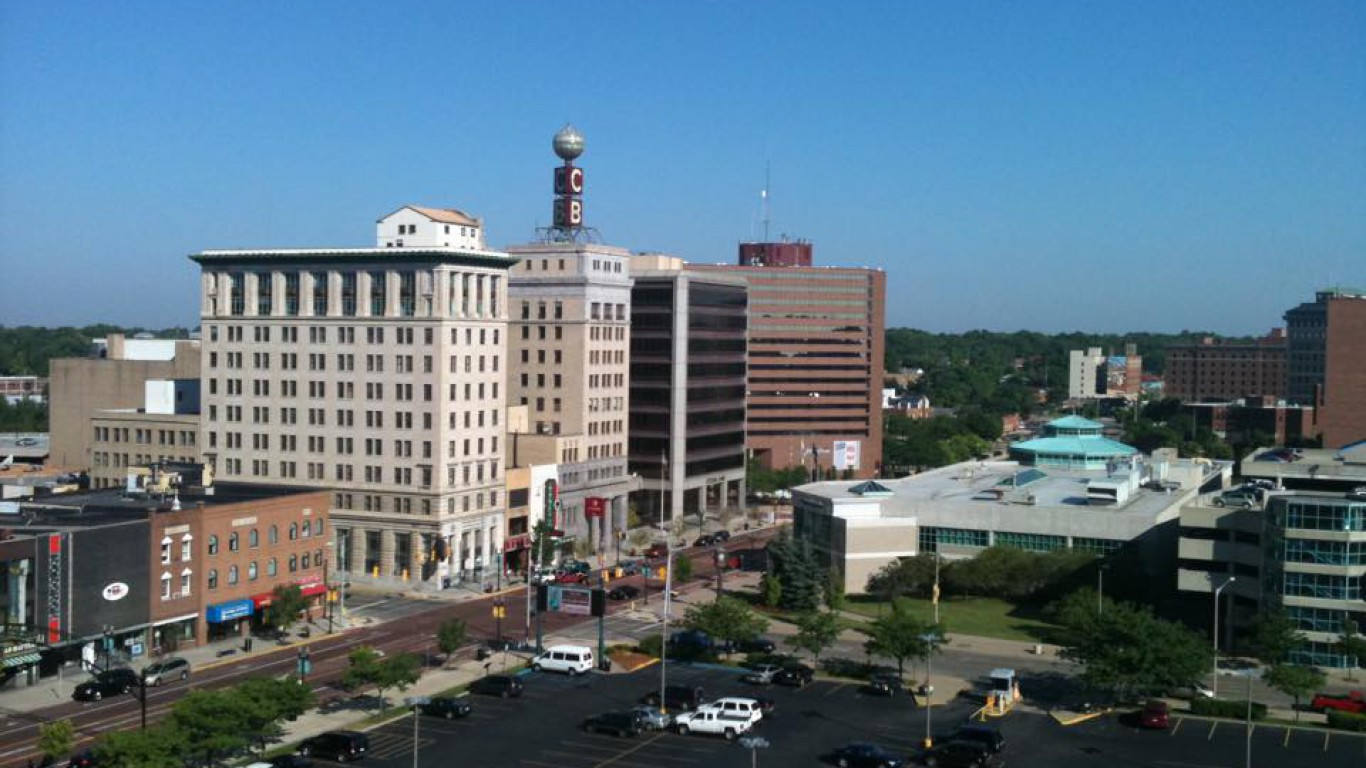
8. Flint, MI
> Population decrease due to migration, 2010-2017: -22,658
> Population change, 2010-2017: -4.3% (425,788 to 407,385)
> Natural growth, 2010-2017: 35,720 births, 31,707 deaths
> Median home value: $106,900
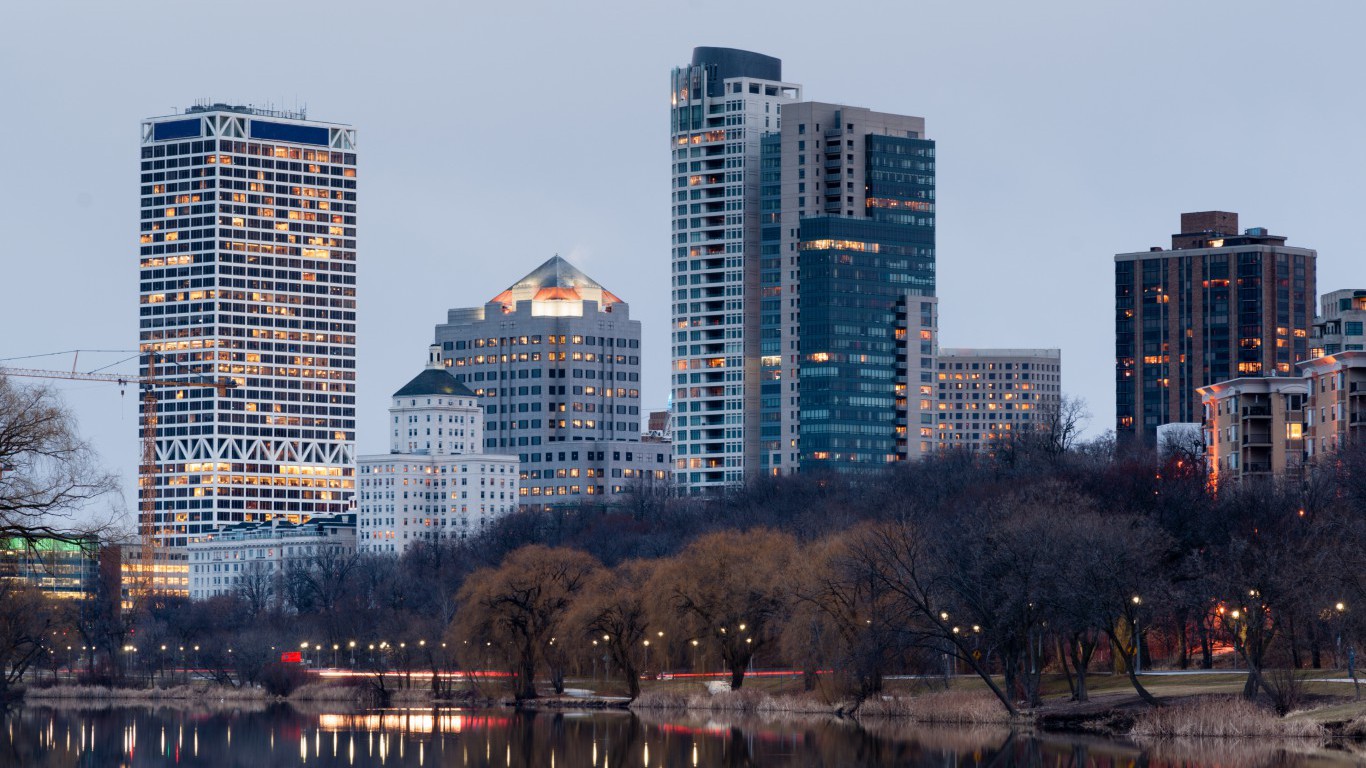
7. Milwaukee-Waukesha-West Allis, WI
> Population decrease due to migration, 2010-2017: -27,959
> Population change, 2010-2017: +1.3% (1,555,954 to 1,576,236)
> Natural growth, 2010-2017: 144,429 births, 95,601 deaths
> Median home value: $204,000
[in-text-ad-2]

6. Memphis, TN-MS-AR
> Population decrease due to migration, 2010-2017: -30,000
> Population change, 2010-2017: +1.8% (1,324,827 to 1,348,260)
> Natural growth, 2010-2017: 136,058 births, 82,670 deaths
> Median home value: $142,400
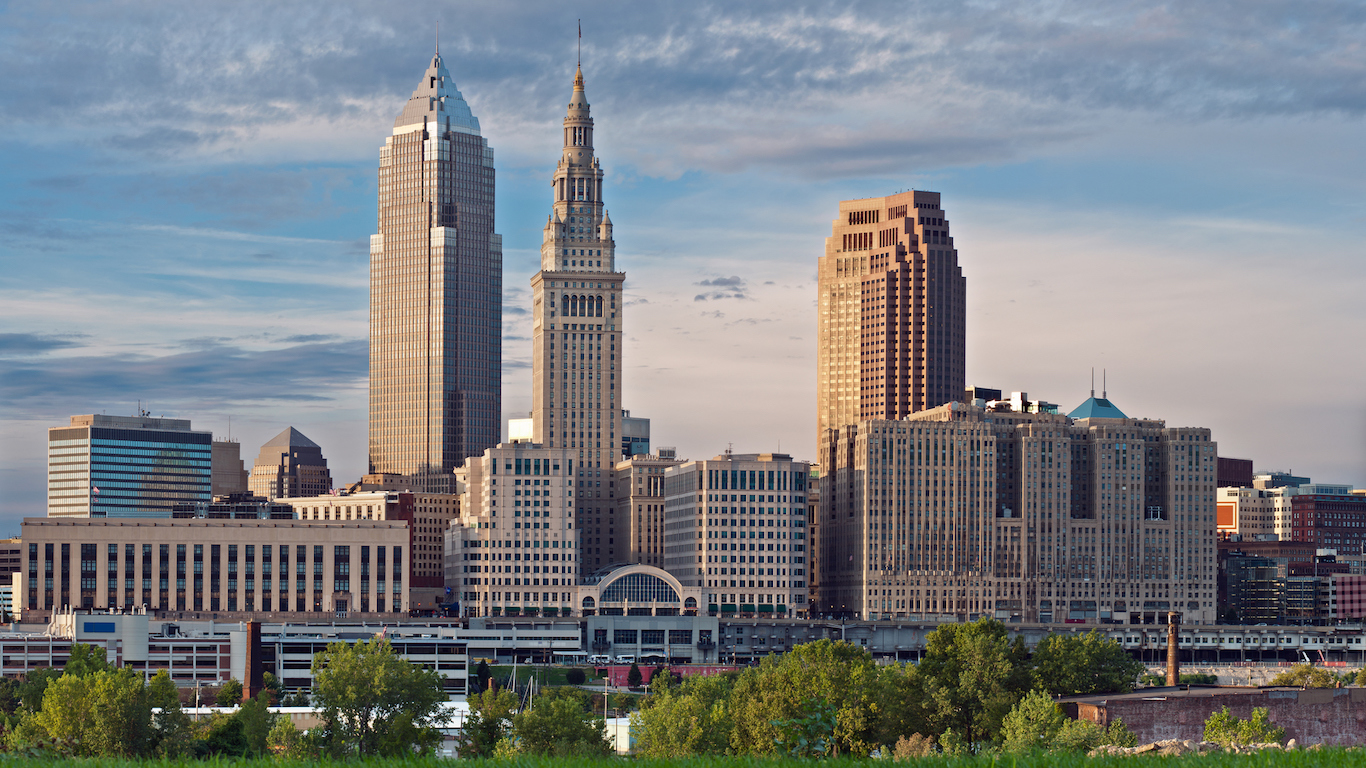
5. Cleveland-Elyria, OH
> Population decrease due to migration, 2010-2017: -33,117
> Population change, 2010-2017: -0.9% (2,077,271 to 2,058,844)
> Natural growth, 2010-2017: 168,361 births, 153,138 deaths
> Median home value: $146,100
[in-text-ad]

4. St. Louis, MO-IL
> Population decrease due to migration, 2010-2017: -39,894
> Population change, 2010-2017: +0.7% (2,787,763 to 2,807,338)
> Natural growth, 2010-2017: 246,280 births, 186,111 deaths
> Median home value: $169,200
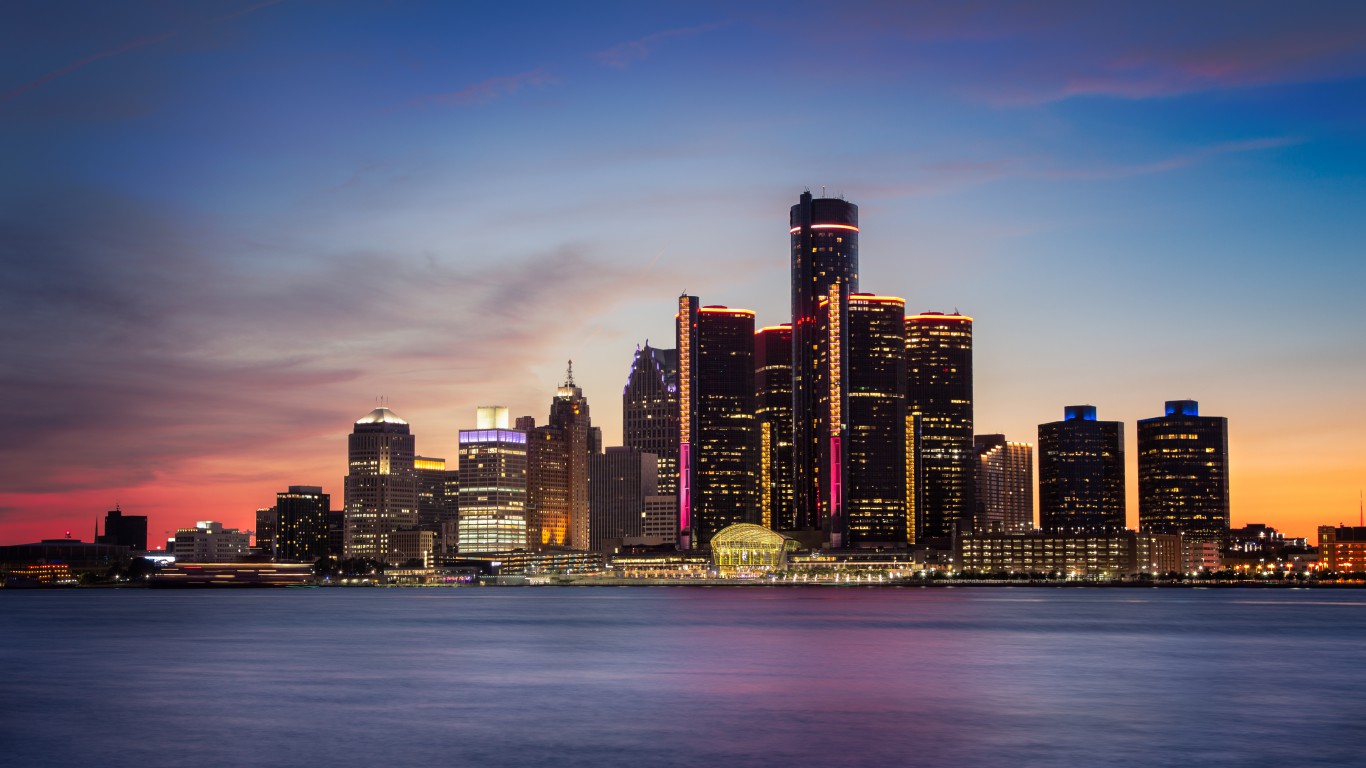
3. Detroit-Warren-Dearborn, MI
> Population decrease due to migration, 2010-2017: -54,640
> Population change, 2010-2017: +0.4% (4,296,317 to 4,313,002)
> Natural growth, 2010-2017: 364,121 births, 293,091 deaths
> Median home value: $160,700

2. Los Angeles-Long Beach-Anaheim, CA
> Population decrease due to migration, 2010-2017: -93,959
> Population change, 2010-2017: +4.1% (12,828,961 to 13,353,907)
> Natural growth, 2010-2017: 1,202,115 births, 578,750 deaths
> Median home value: $578,200
[in-text-ad-2]
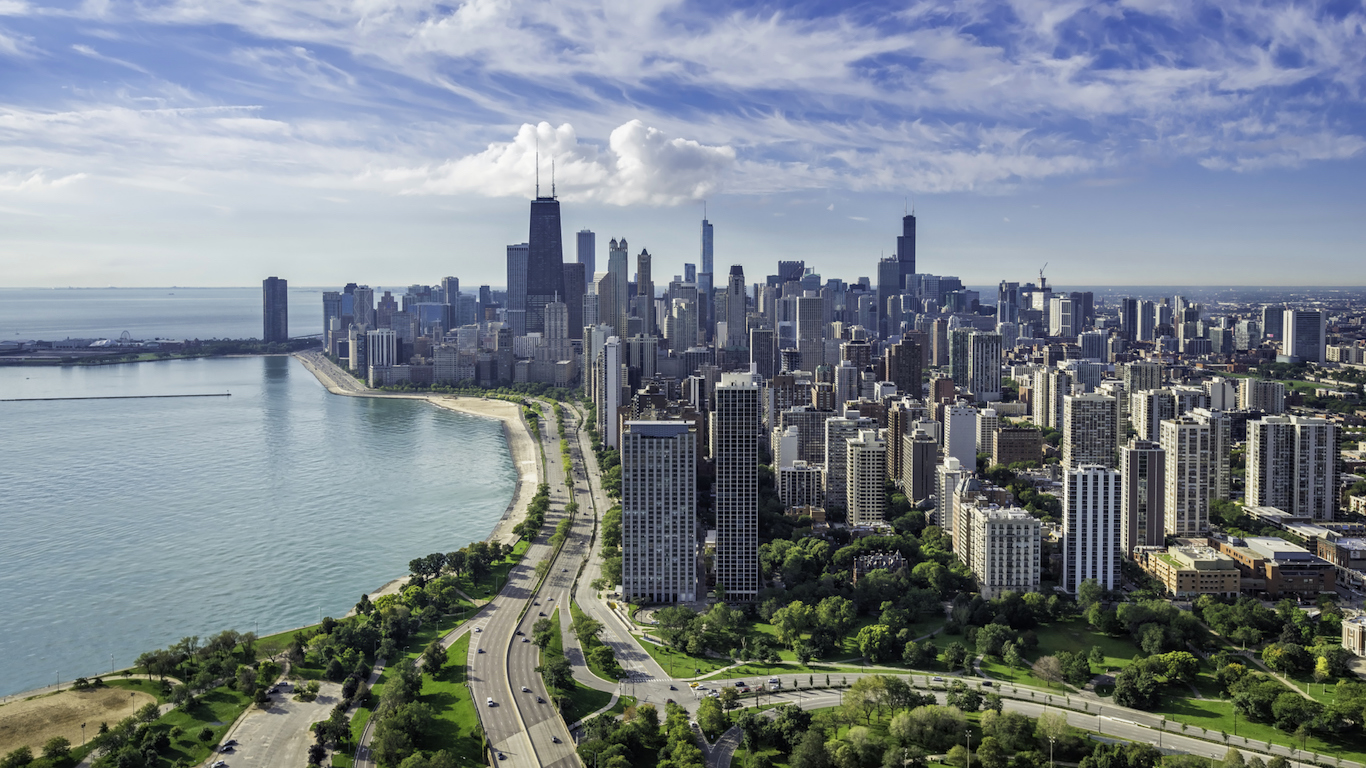
1. Chicago-Naperville-Elgin, IL-IN-WI
> Population decrease due to migration, 2010-2017: -296,320
> Population change, 2010-2017: +0.8% (9,461,541 to 9,533,040)
> Natural growth, 2010-2017: 869,178 births, 501,469 deaths
> Median home value: $229,900
Detailed Findings
Not all the cities with the largest net declines in population from migration since 2010 are necessarily the fastest shrinking cities. However, among the U.S. metropolitan areas with the highest net population declines due to migration, the vast majority have had the largest overall decreases in population.
Two notable exceptions are New York and Los Angeles. While tens of thousands more people moved out of each city than moved in, both cities have still had among the highest net increases in population. This is because of natural population growth — hundreds of thousands more people in these cities have been born than died. Notably, Los Angeles had a net migration loss of 93,959, but the overall population increased by over three-quarters of a million people because of births.
Frey explained that movement from New York and Los Angeles to many of the cities with the largest net migration increases is due to residents of these cities getting pushed out because of rising populations and prices, the latter of which is a product of the economic recovery. “Now that things are picking up again, people are moving out of cities. As the housing market is coming back, people are being sucked out of pricey areas to where it is more affordable again.”
Frey gave the example of one common migration pattern: Los Angeles to Las Vegas, the latter of which had the 15th highest net population increase due to migration. Los Angeles has always lost residents to Las Vegas, but when the recession hit and housing prices fell, that movement slowed significantly.
Now that housing prices have recovered in Los Angeles and have become too expensive for many residents, people are once again moving out of the city in droves. As of 2016, Los Angeles had the seventh highest median home value of any metropolitan area, at $578,200. Las Vegas’ median home value is just slightly more than half that, at $233,700.
“The same sort of thing is true for a place like New York,” Frey added. “There has always been huge movement going from New York to Florida, but during the Great Recession period that slowed up quite a bit, and now it is picking up again.”
Frey added that the reasons behind the decline in population in cities like Los Angeles and New York — overcrowding and high prices — are very different than the reasons for decreases in other cities on this list, notably Rust Belt cities like Flint, Michigan; Toledo, Ohio; and Rockford, Illinois; and even larger cities like St. Louis, Cleveland, and Milwaukee. These cities have been losing domestic migrants for decades due to stagnating economic conditions stemming from the decline of American manufacturing.
Methodology
To identify America’s Fastest Declining Cities, 24/7 Wall St. reviewed the annual estimates of resident population and the estimates of the components of residential population change from April 1, 2010 to July 1, 2017, provided by the American Community Survey. Population, and home value data also came from the 2016 American Community Survey.
In 20 Years, I Haven’t Seen A Cash Back Card This Good
After two decades of reviewing financial products I haven’t seen anything like this. Credit card companies are at war, handing out free rewards and benefits to win the best customers.
A good cash back card can be worth thousands of dollars a year in free money, not to mention other perks like travel, insurance, and access to fancy lounges.
Our top pick today pays up to 5% cash back, a $200 bonus on top, and $0 annual fee. Click here to apply before they stop offering rewards this generous.
Flywheel Publishing has partnered with CardRatings for our coverage of credit card products. Flywheel Publishing and CardRatings may receive a commission from card issuers.
Thank you for reading! Have some feedback for us?
Contact the 24/7 Wall St. editorial team.
 24/7 Wall St.
24/7 Wall St. 24/7 Wall St.
24/7 Wall St. 24/7 Wall St.
24/7 Wall St. 24/7 Wall St.
24/7 Wall St.



